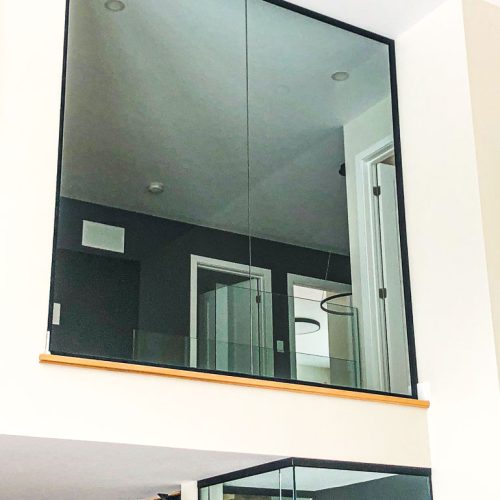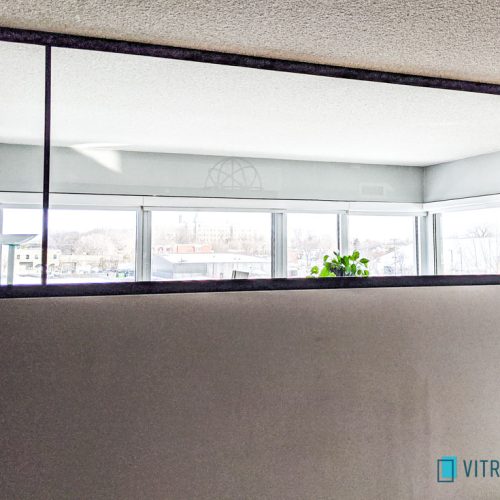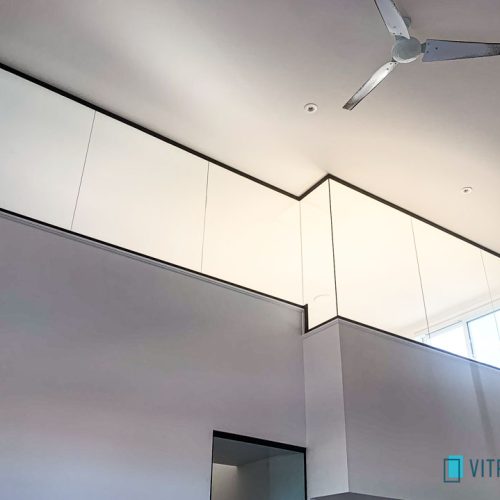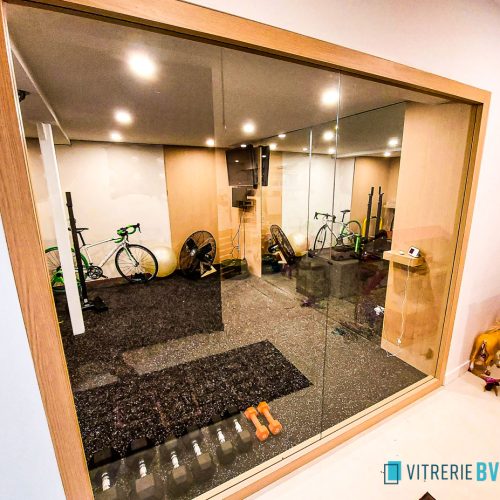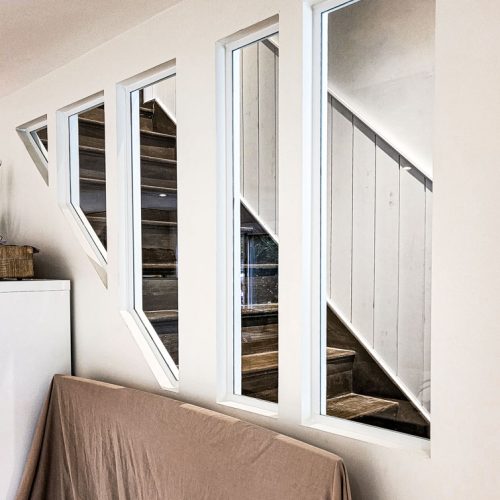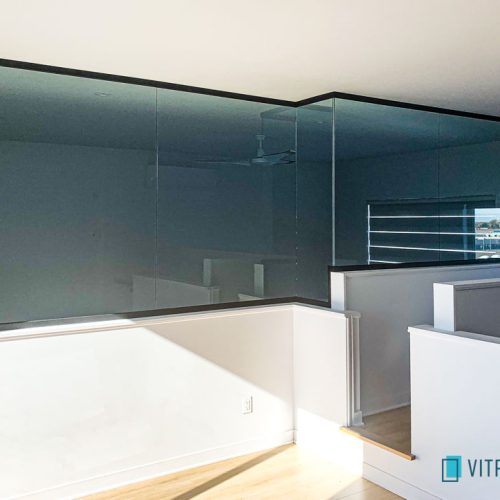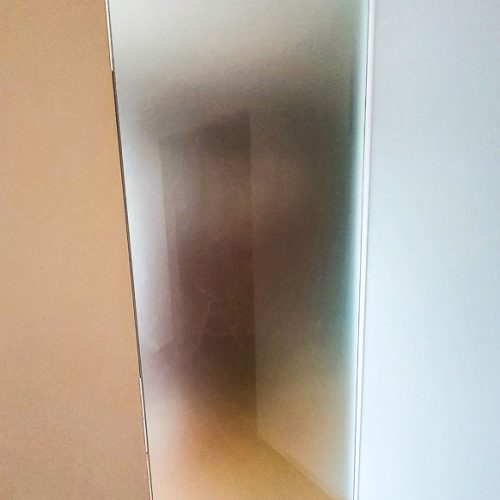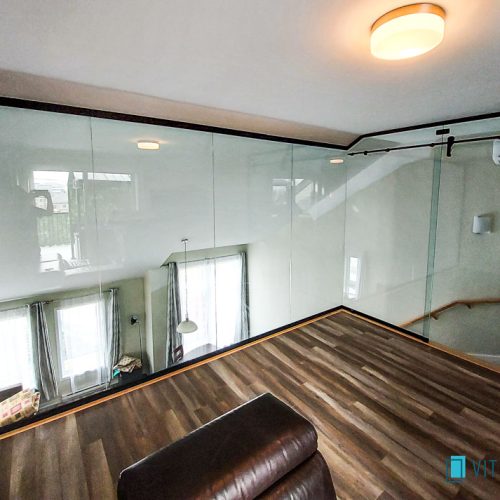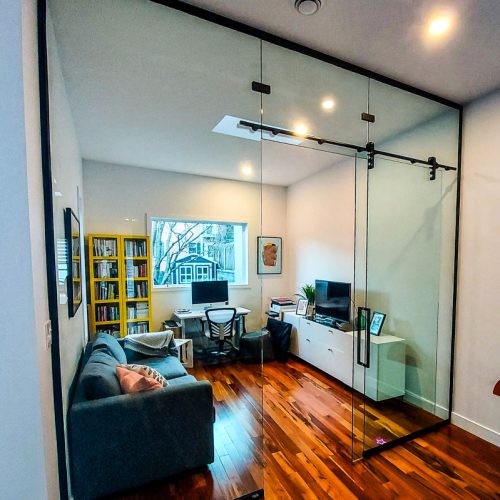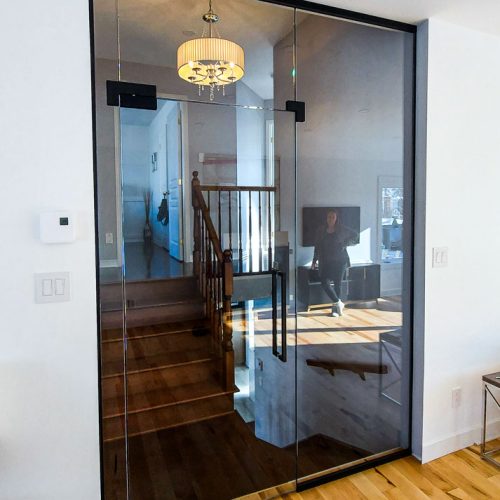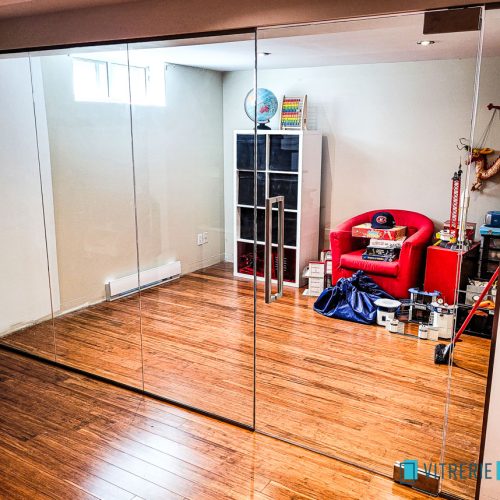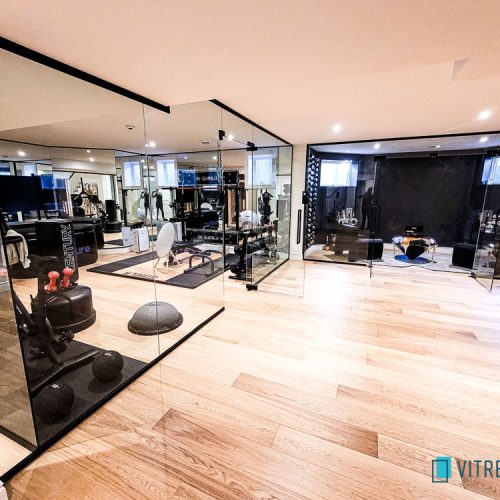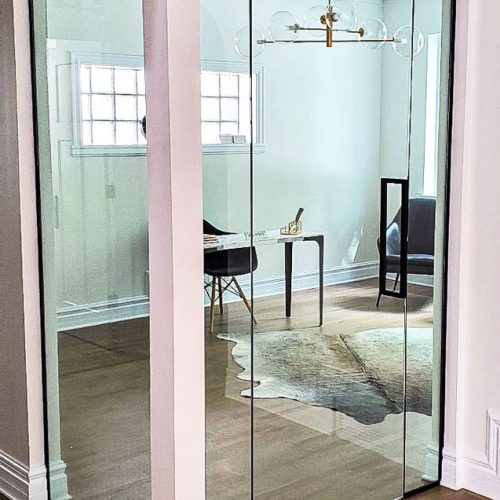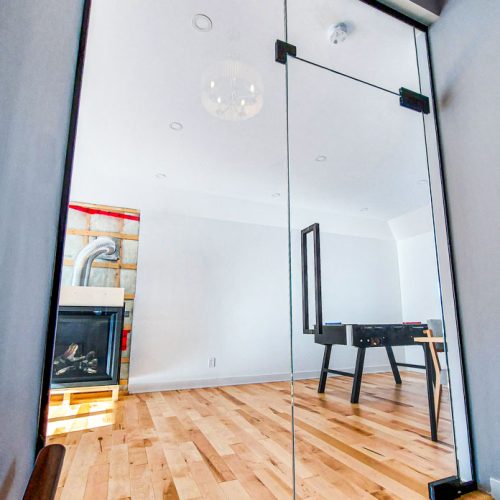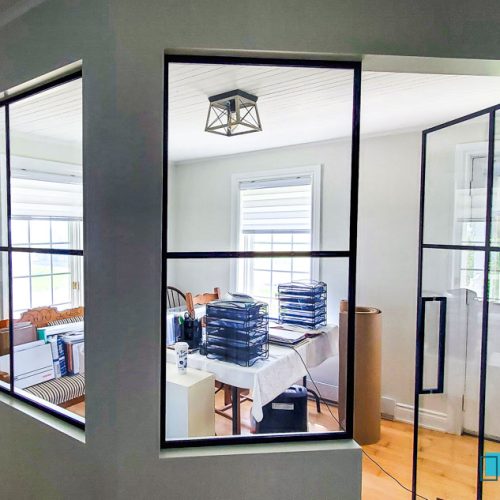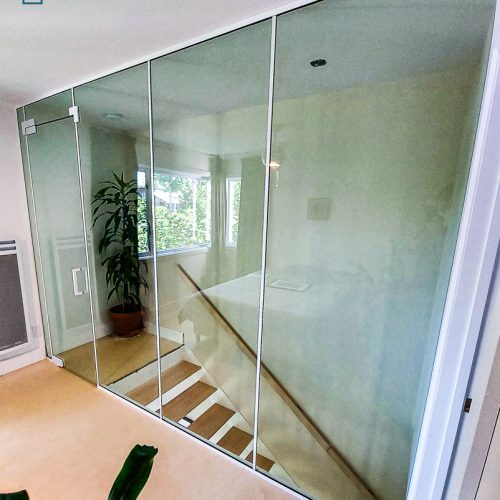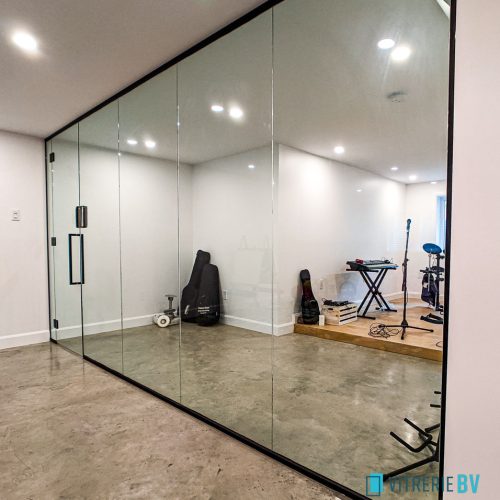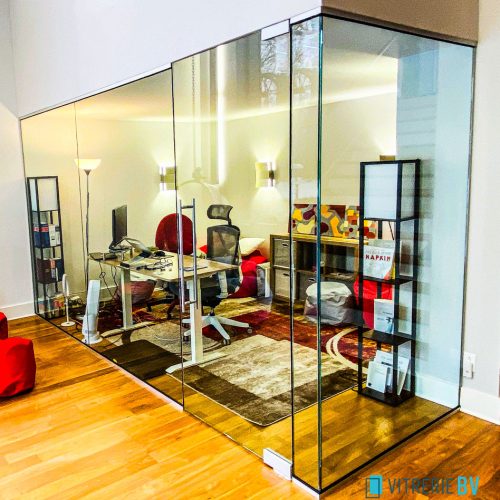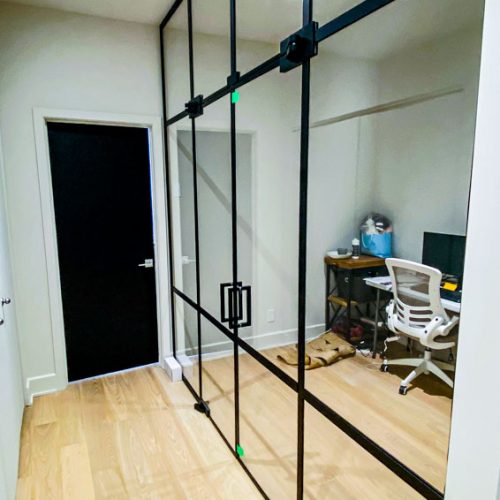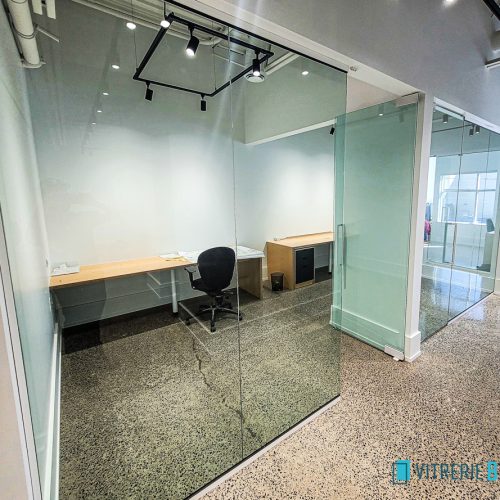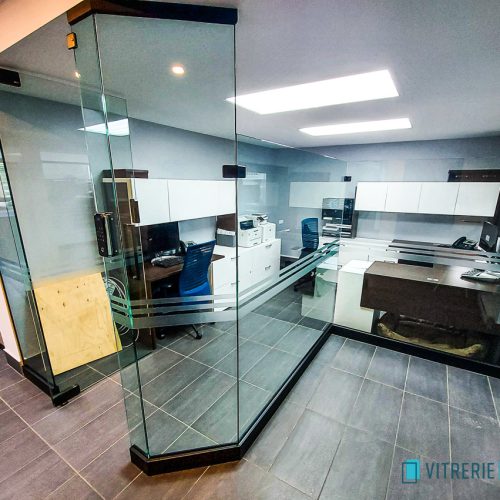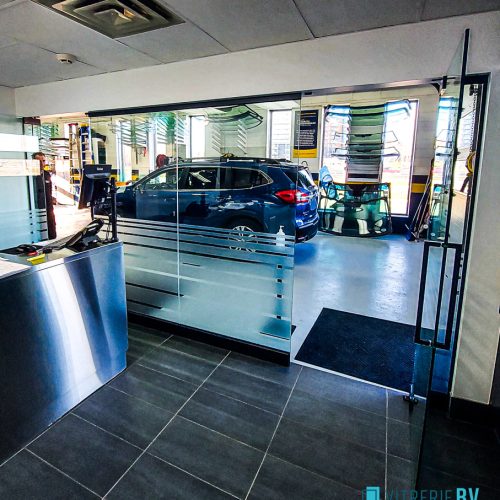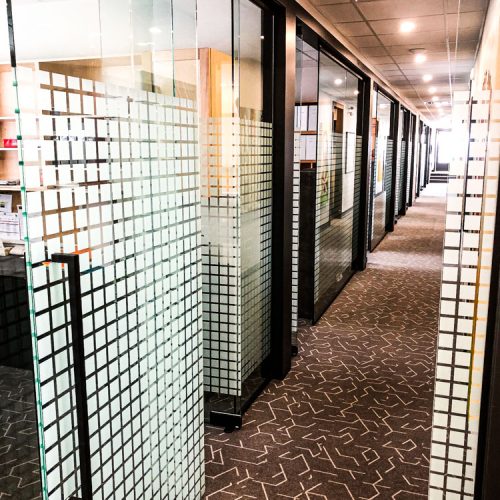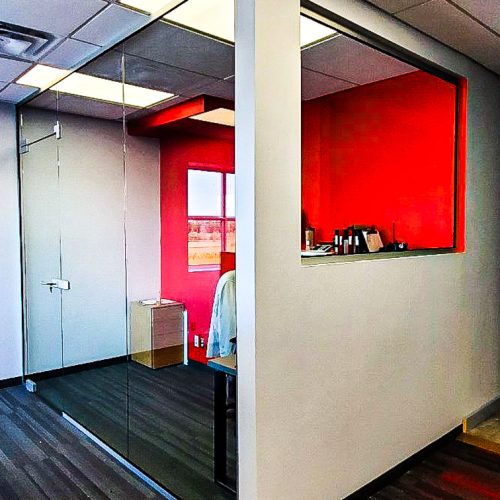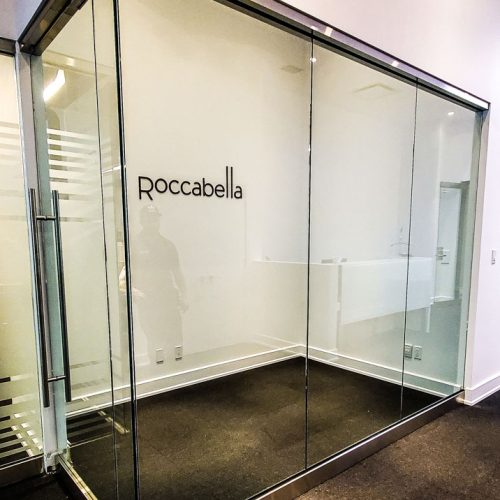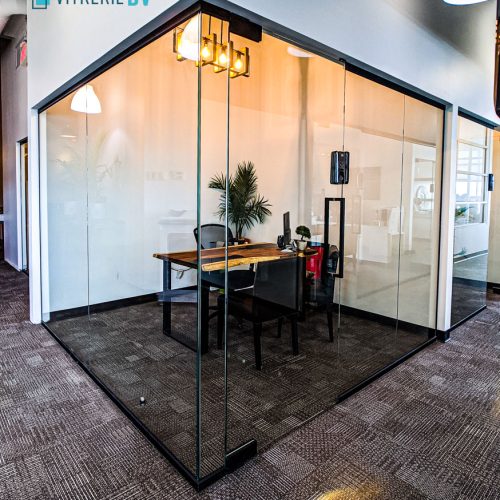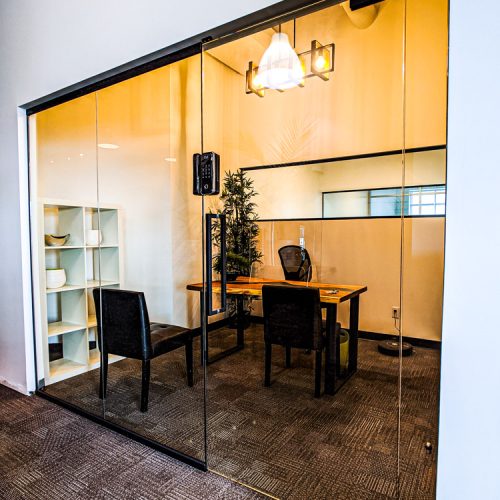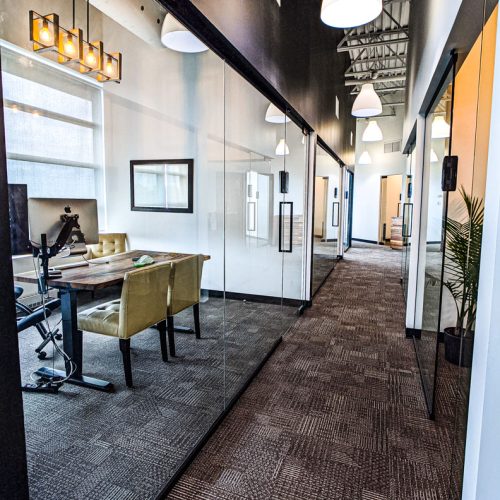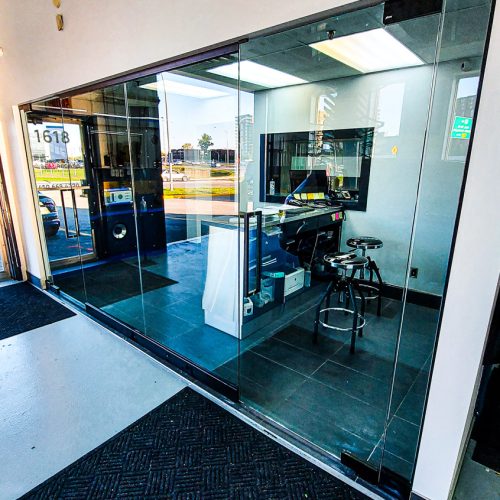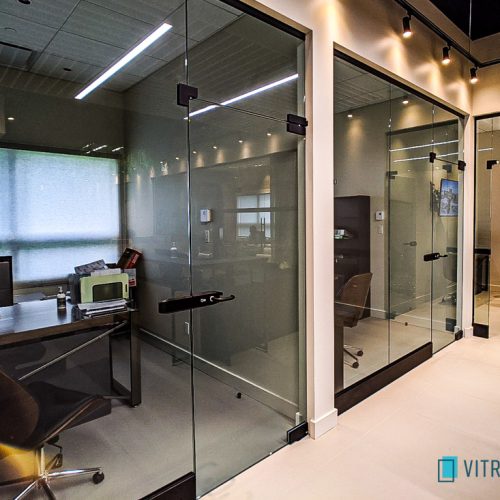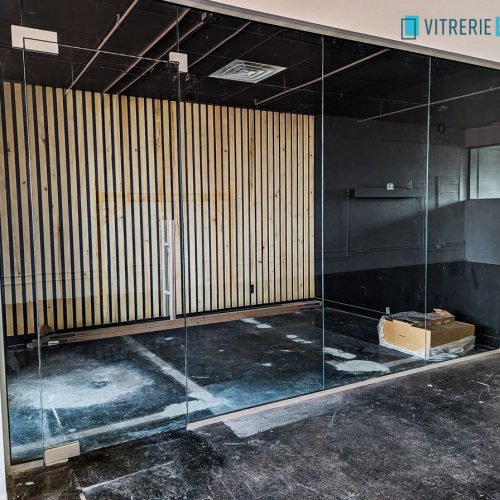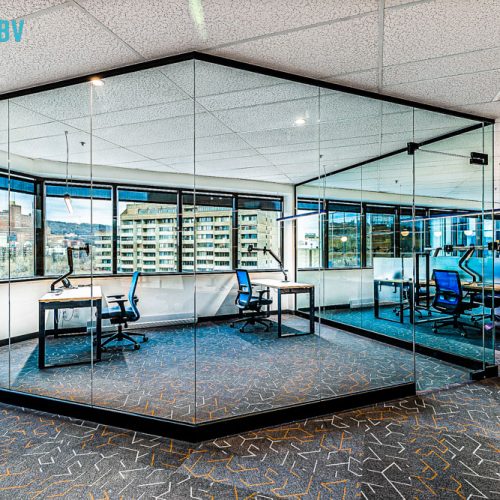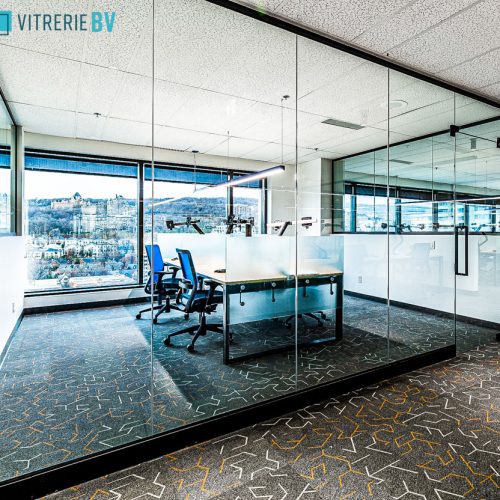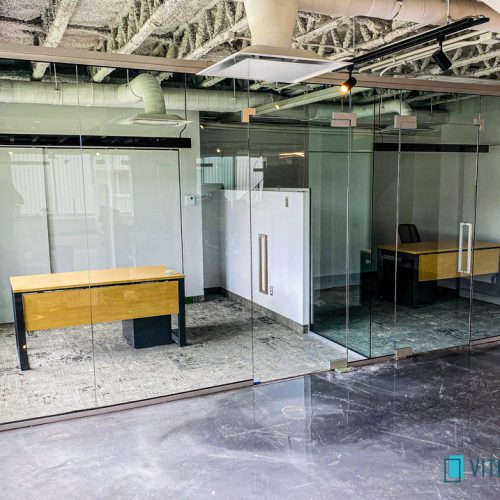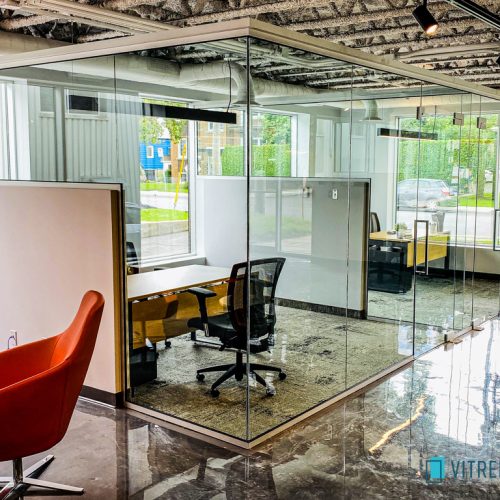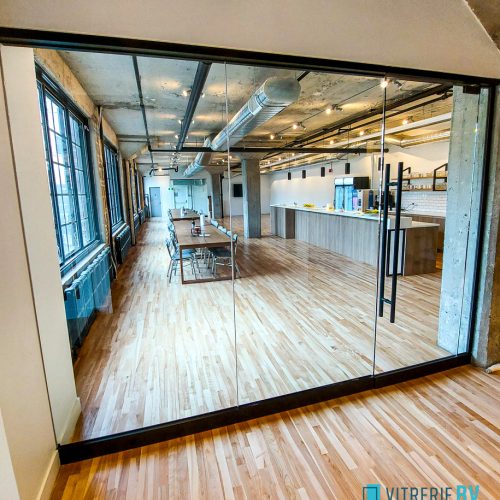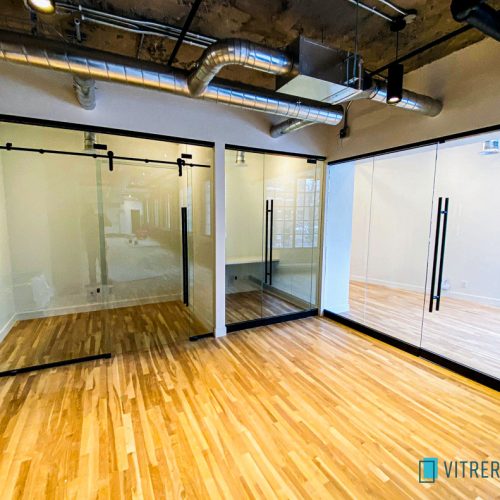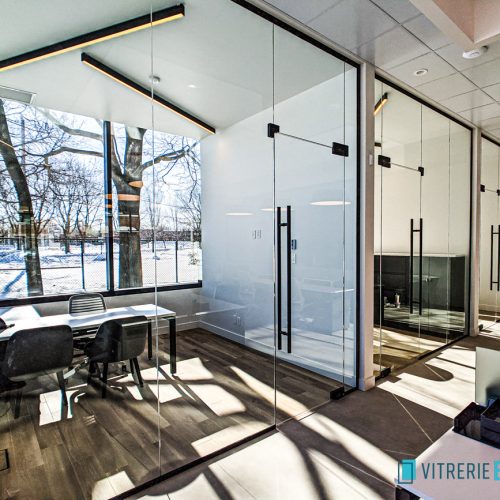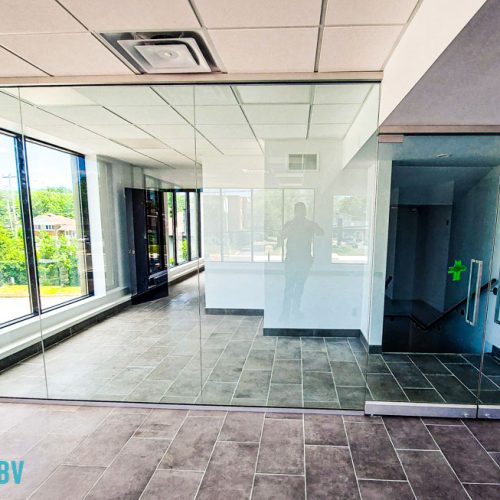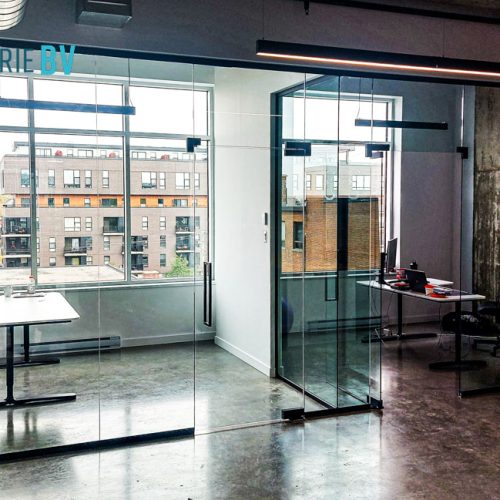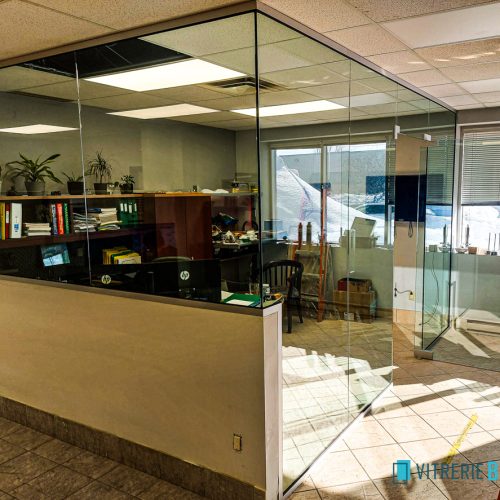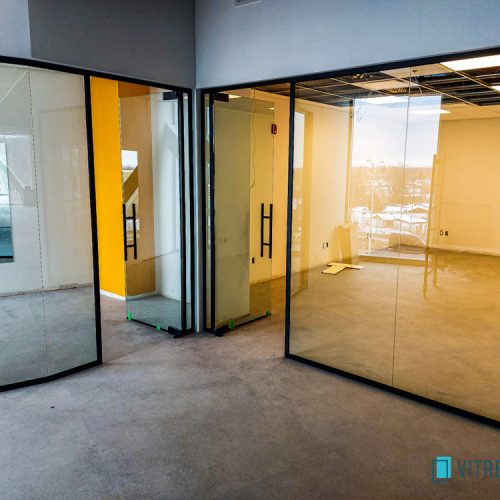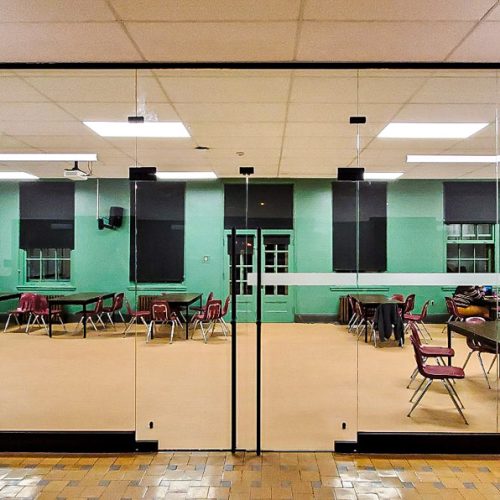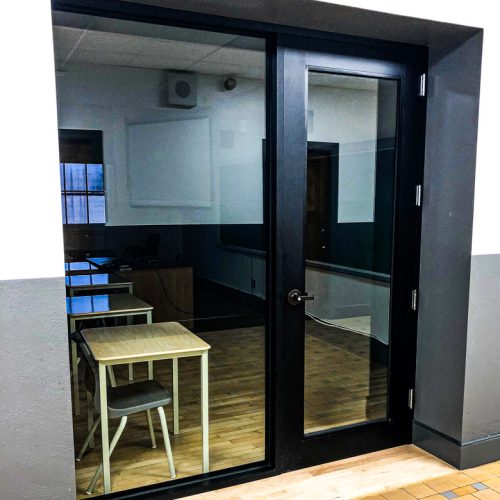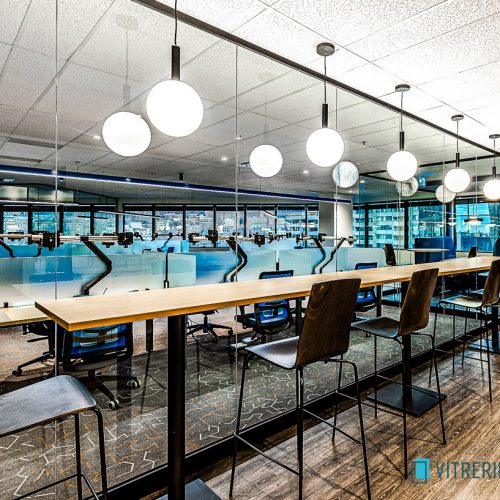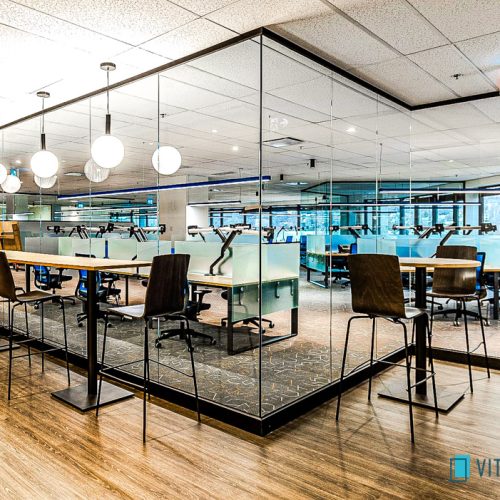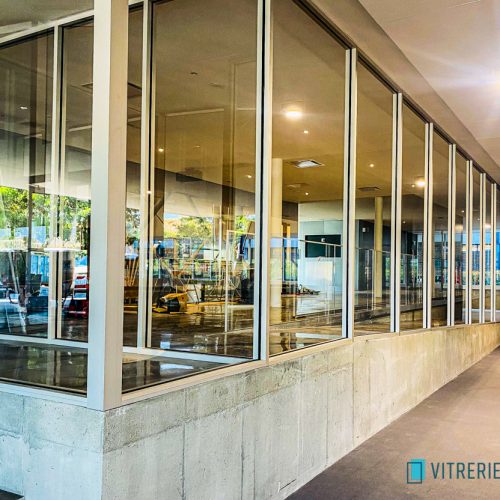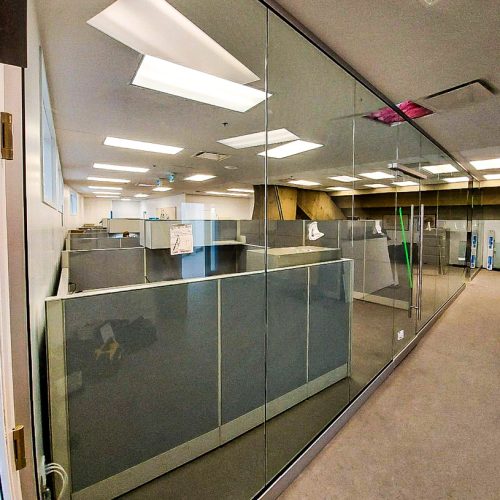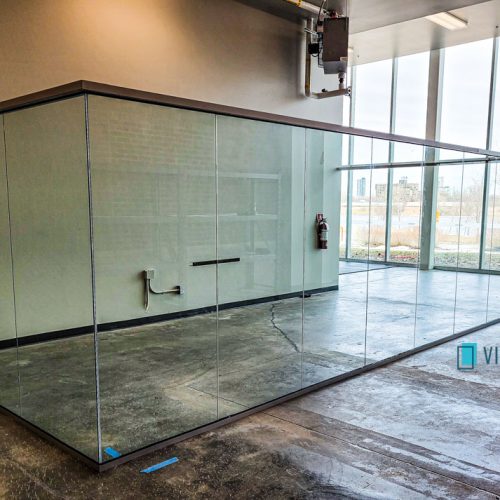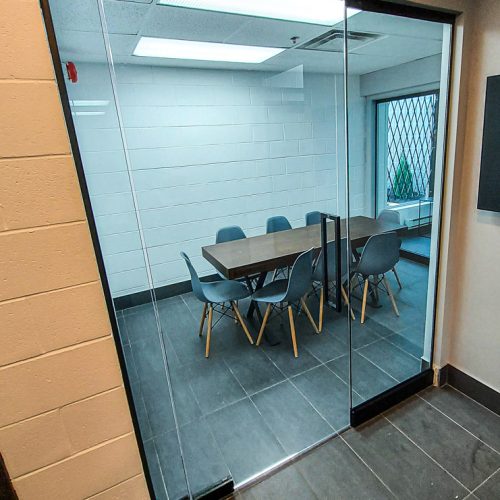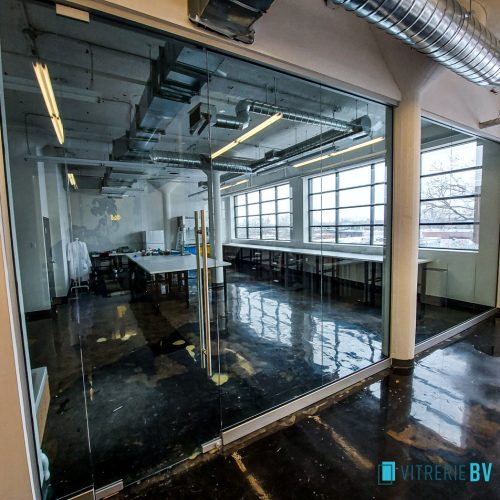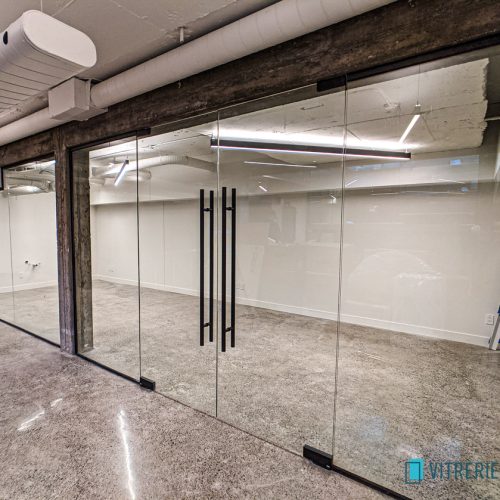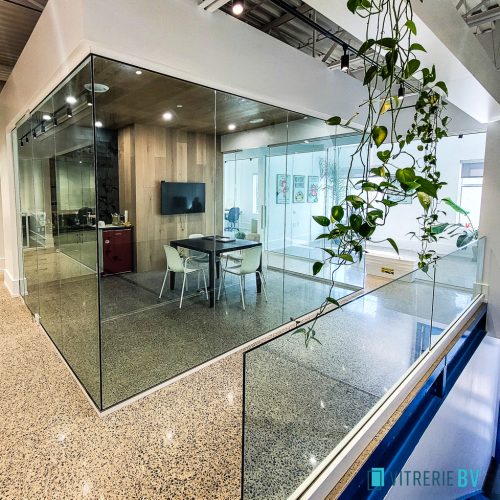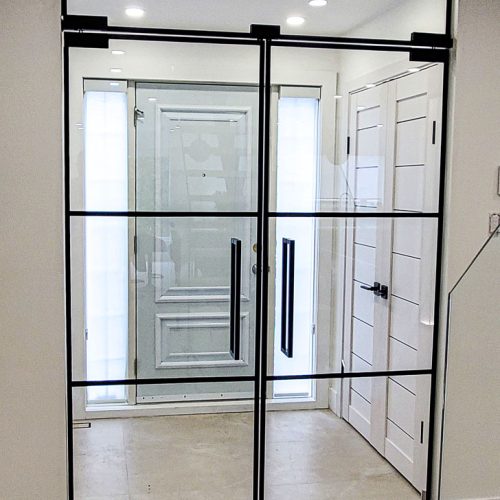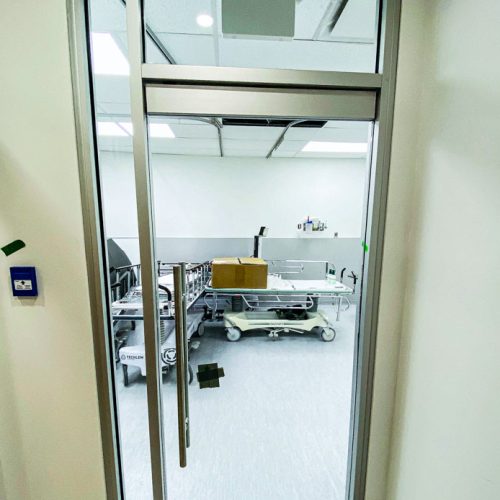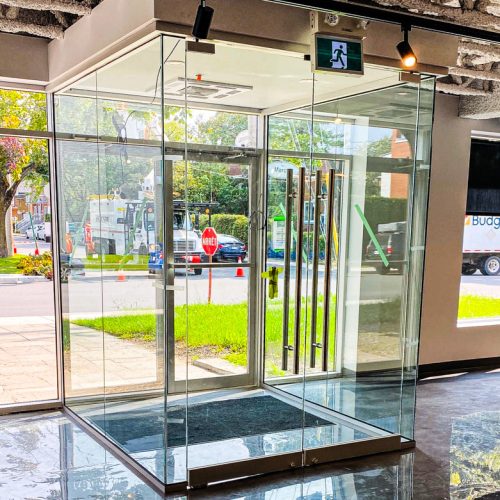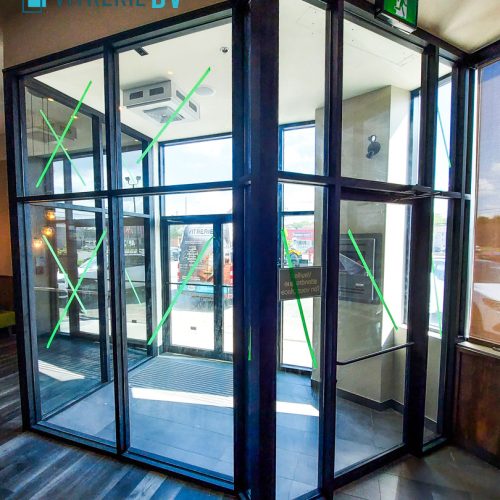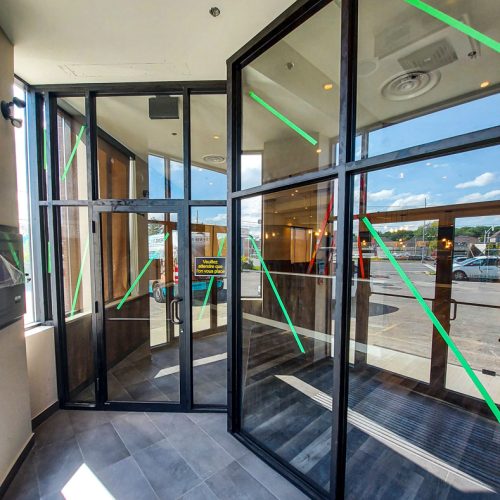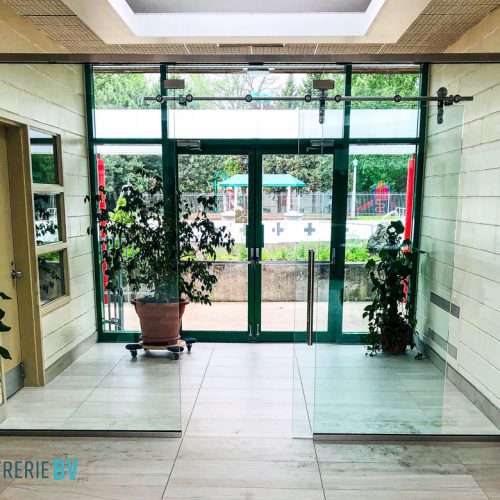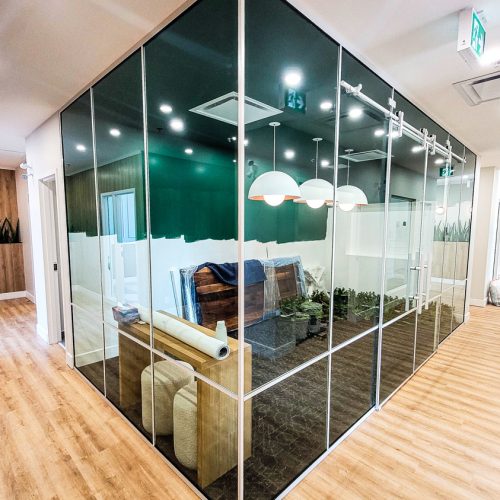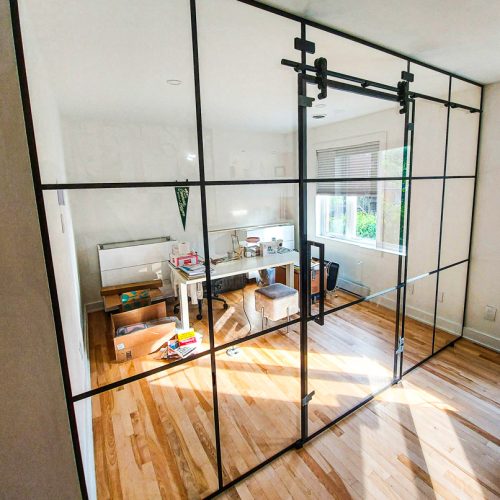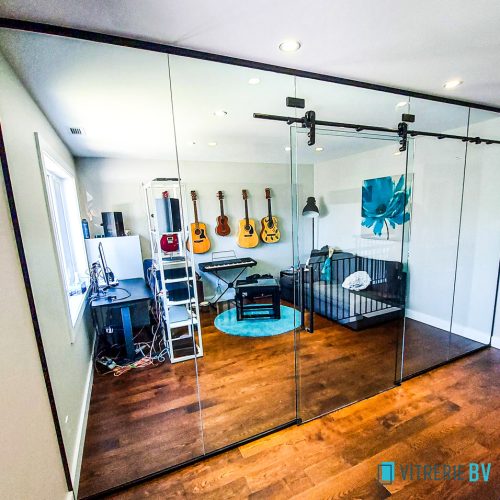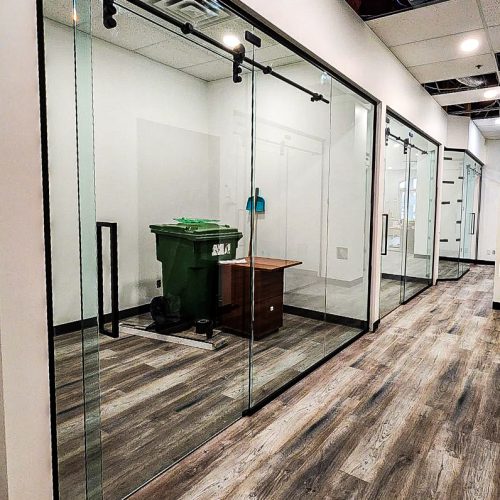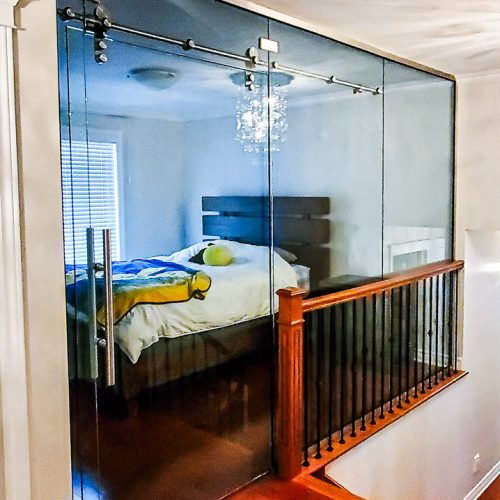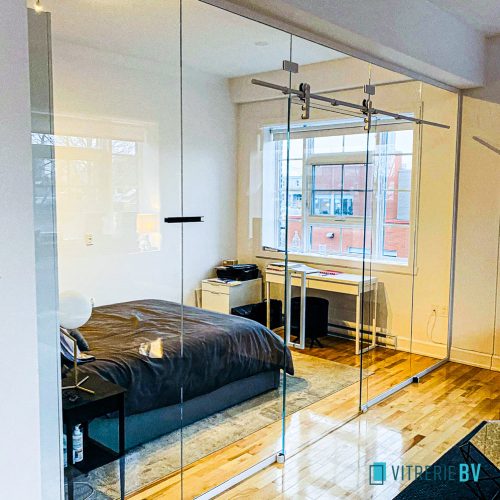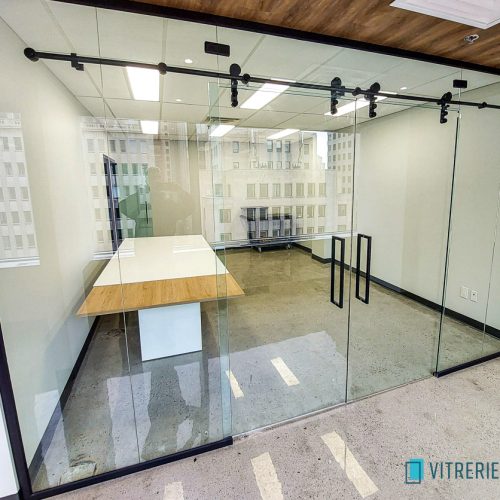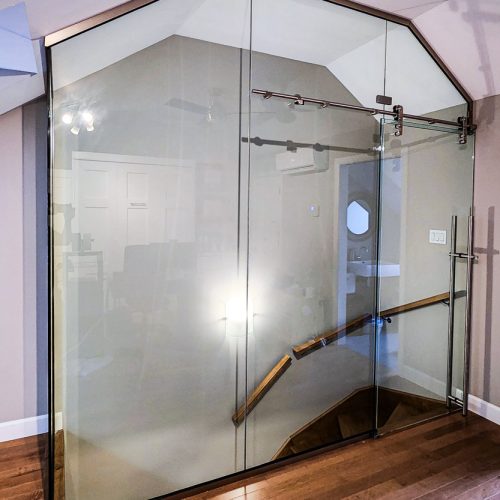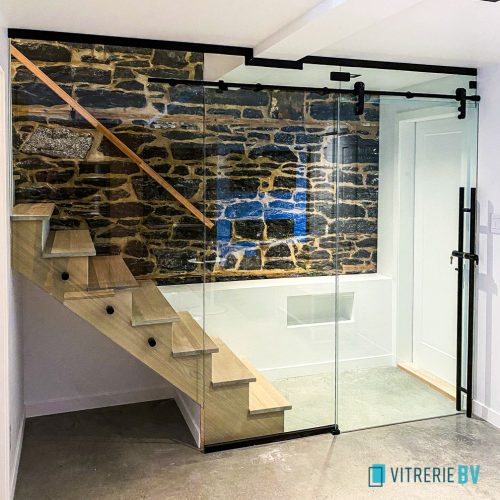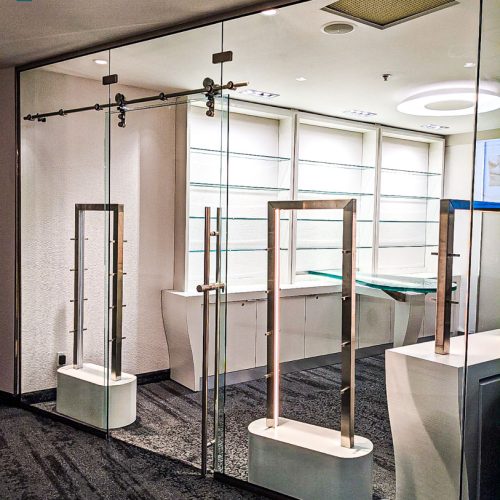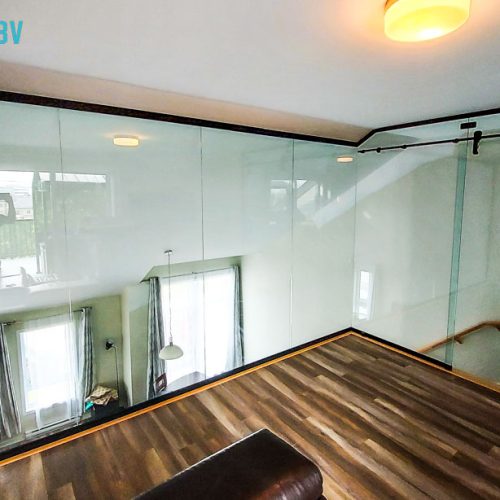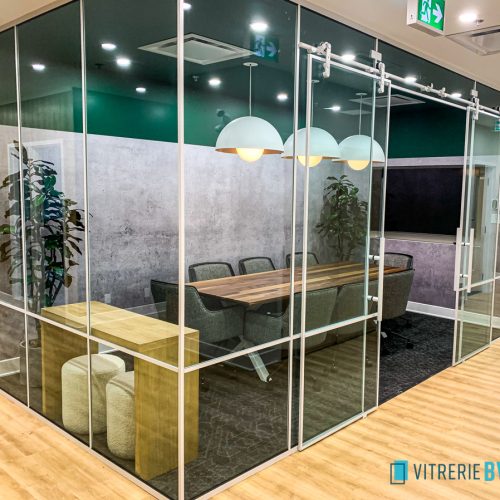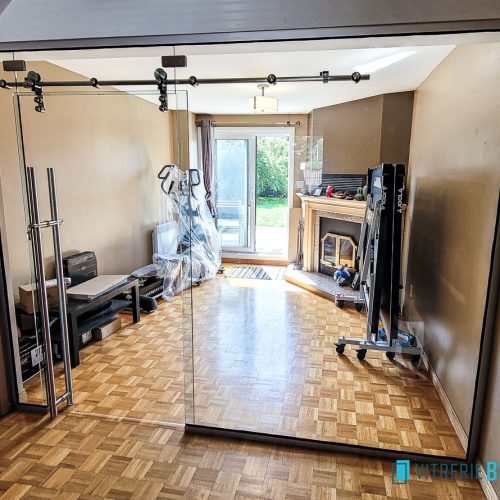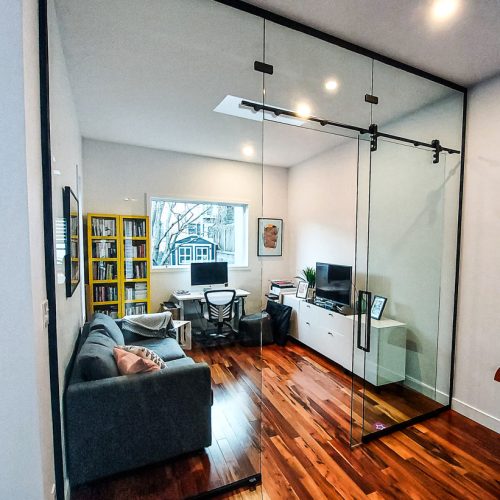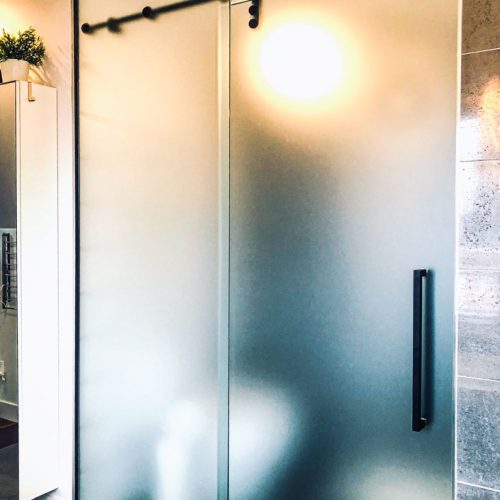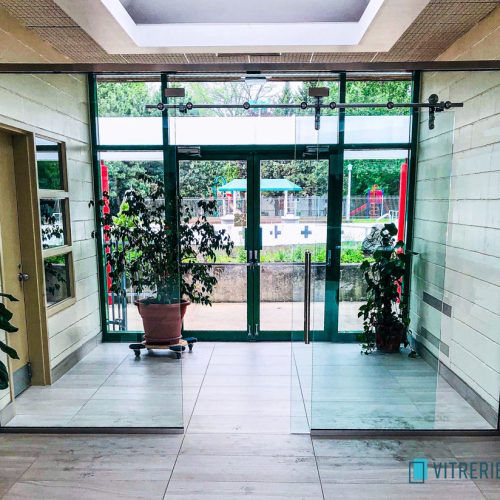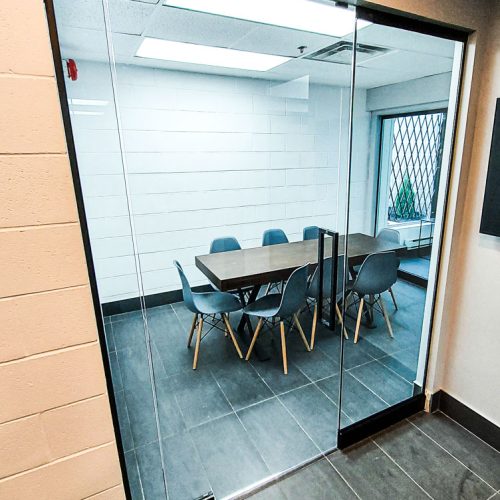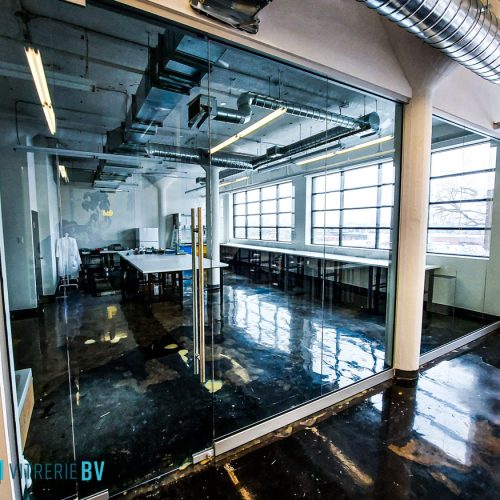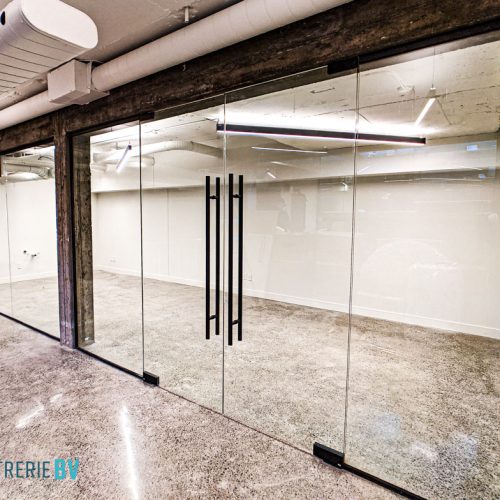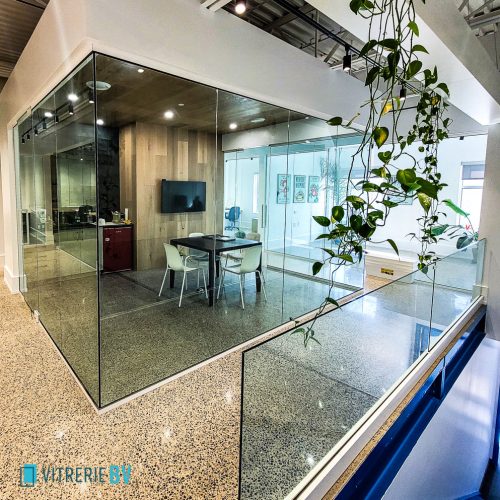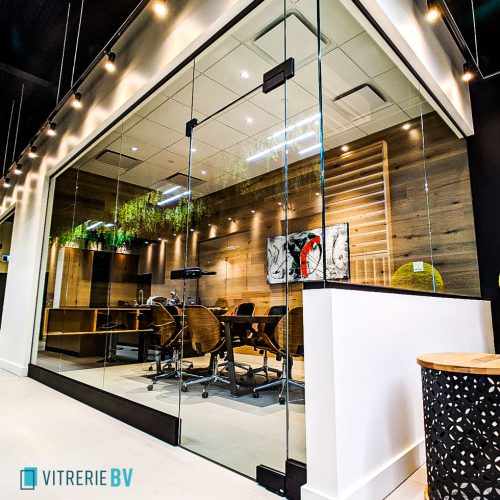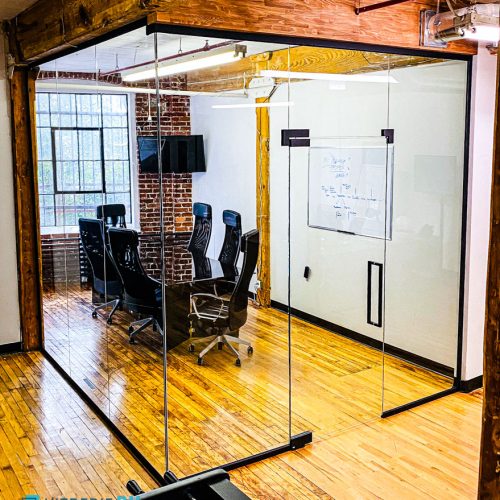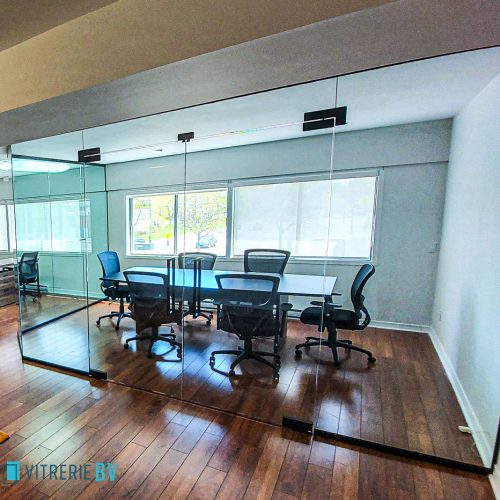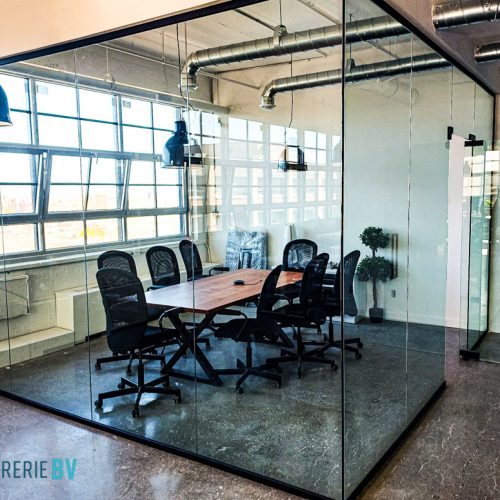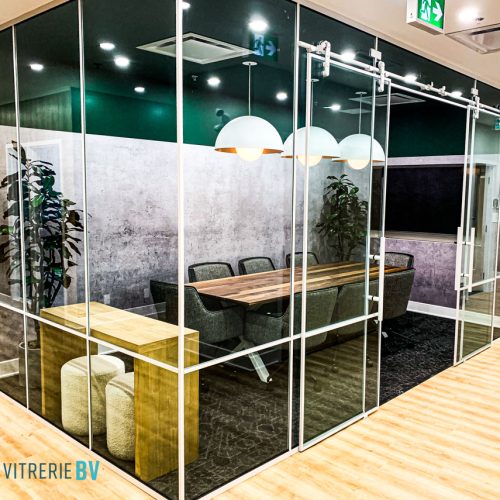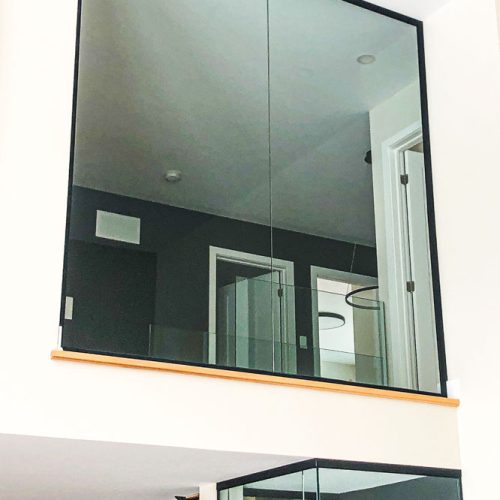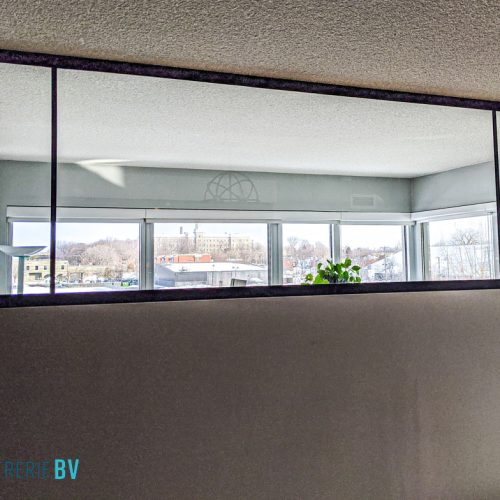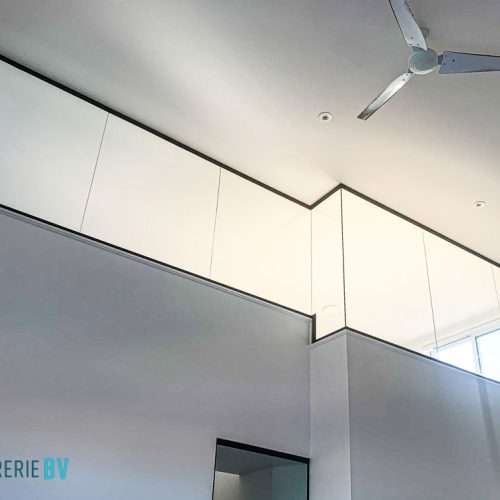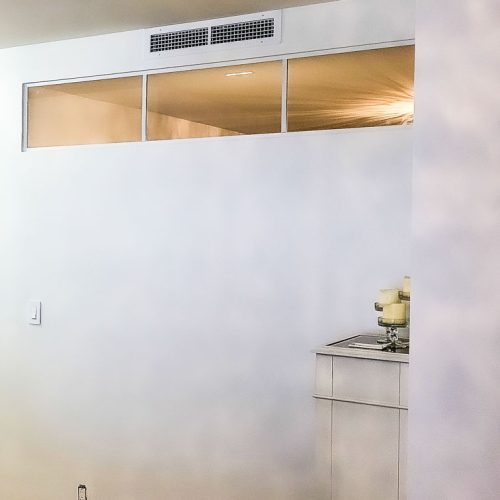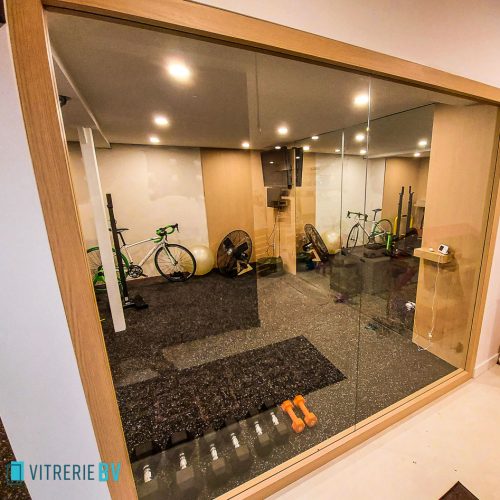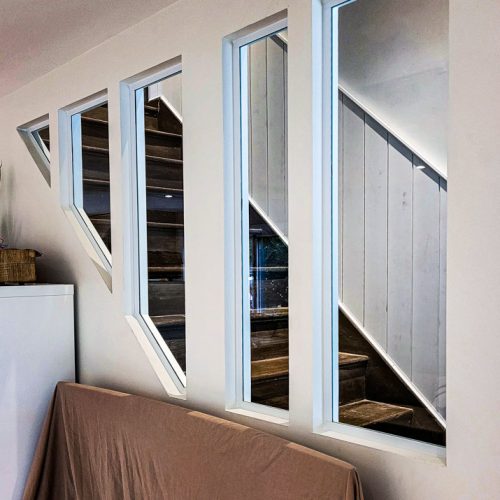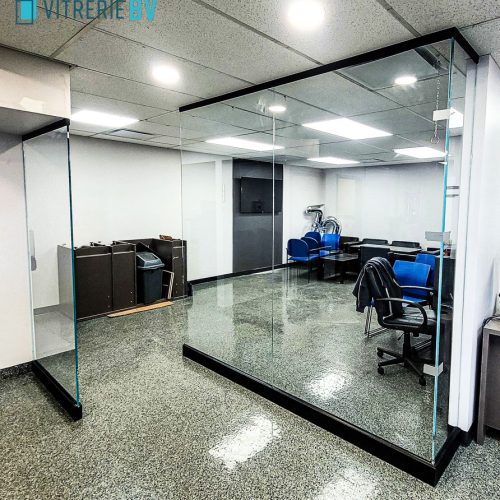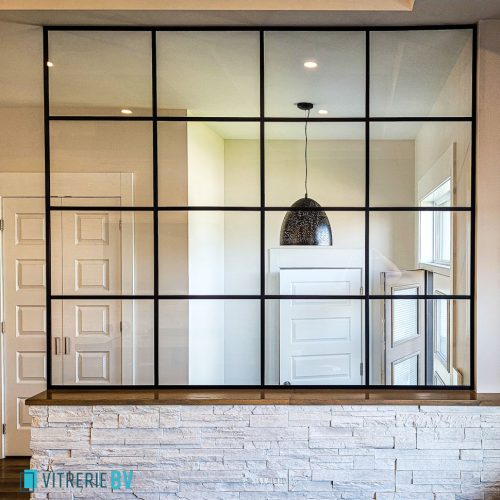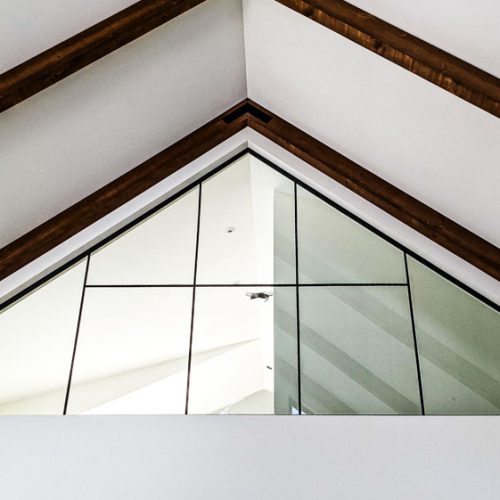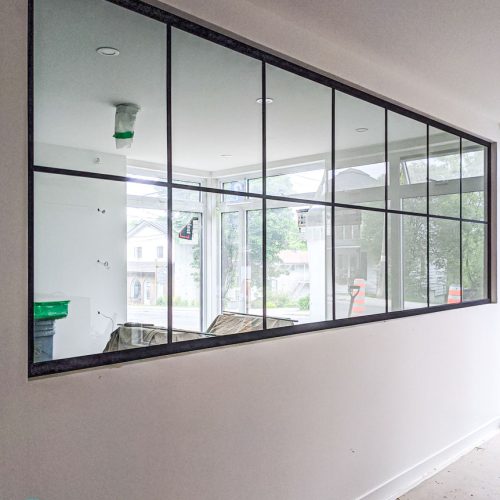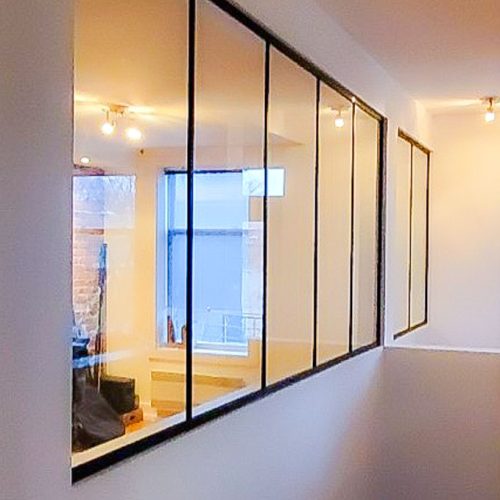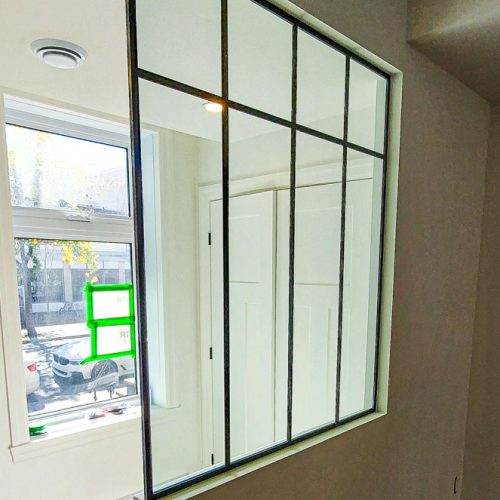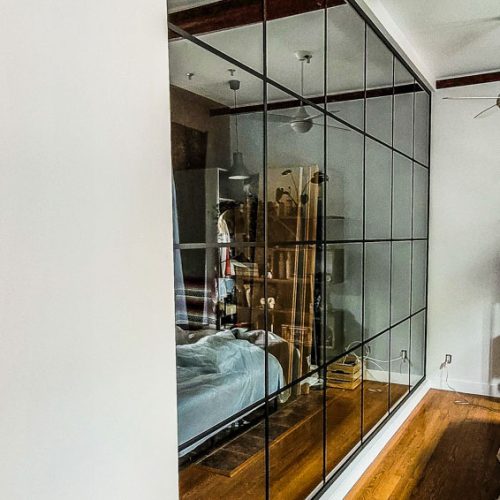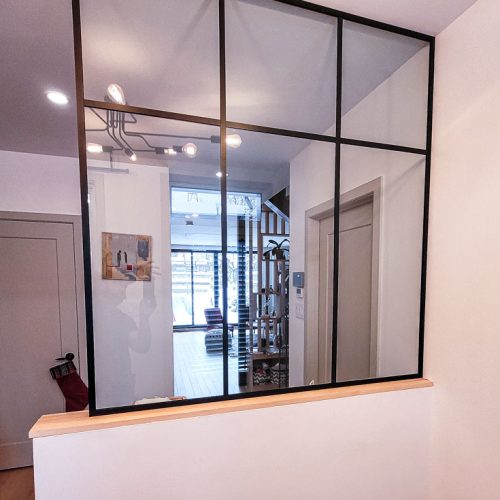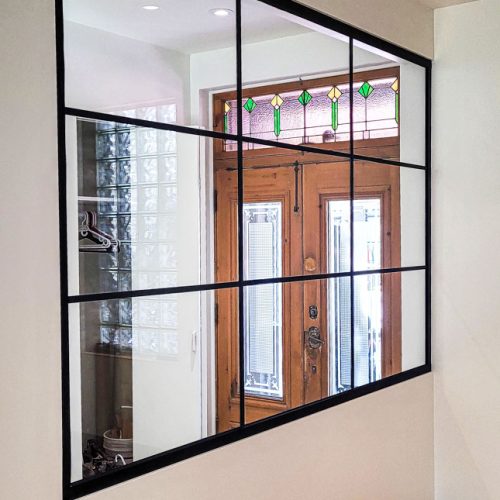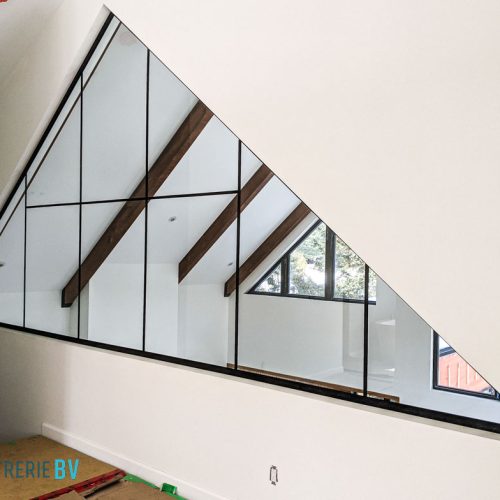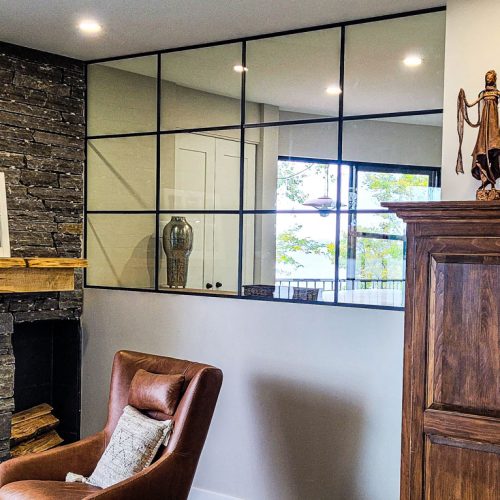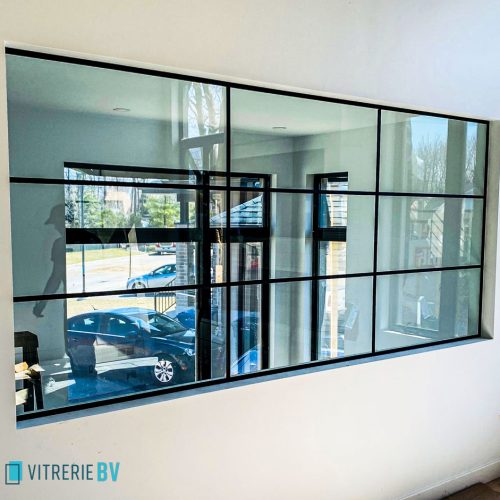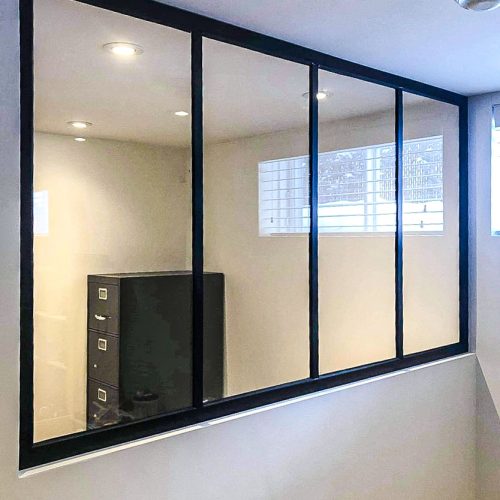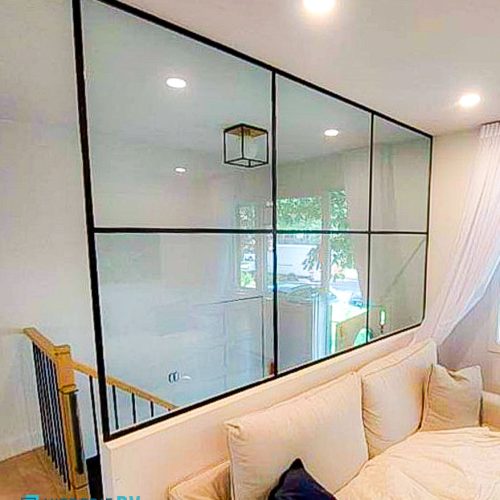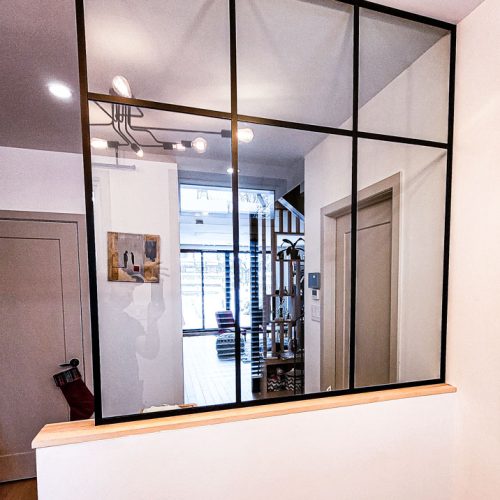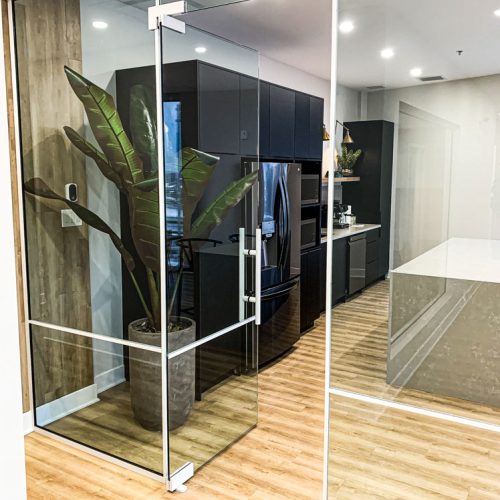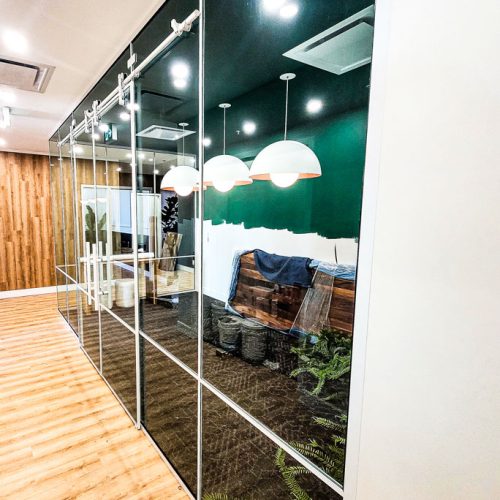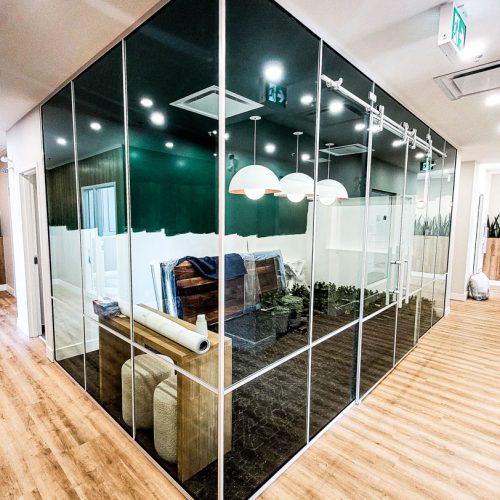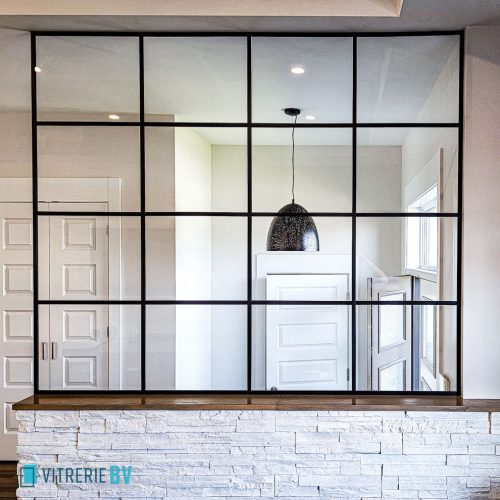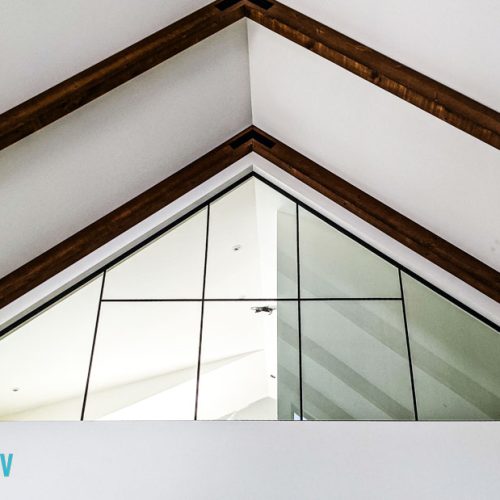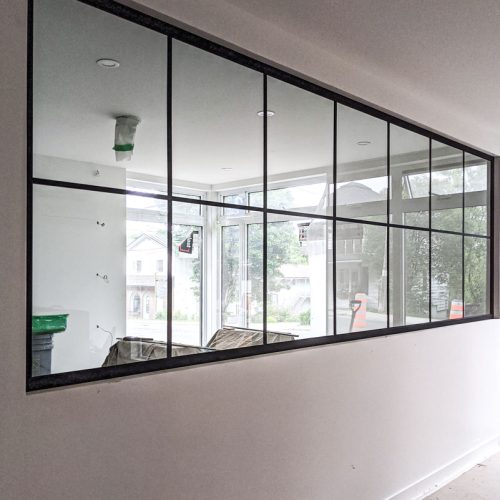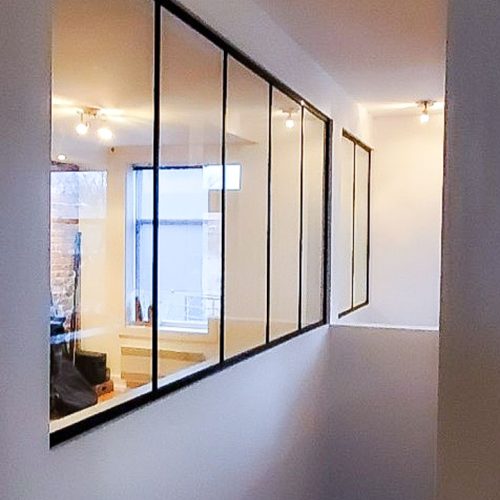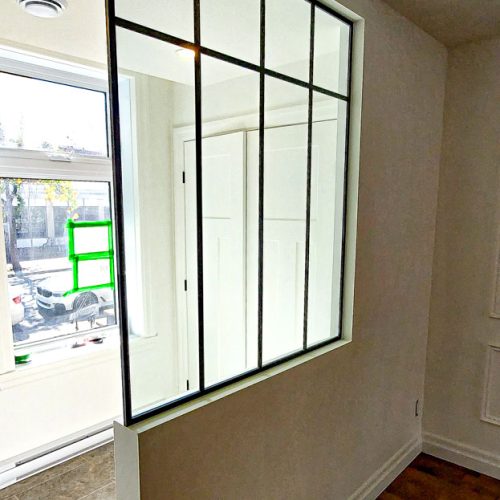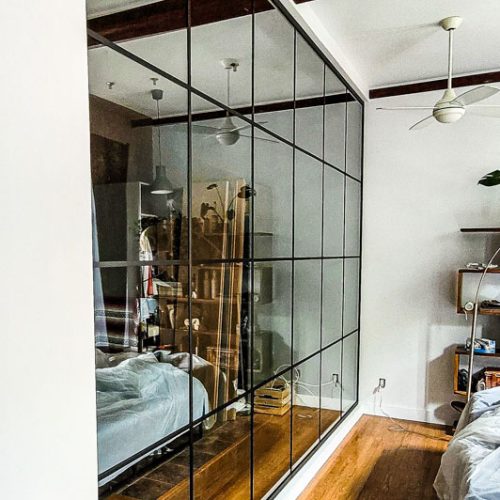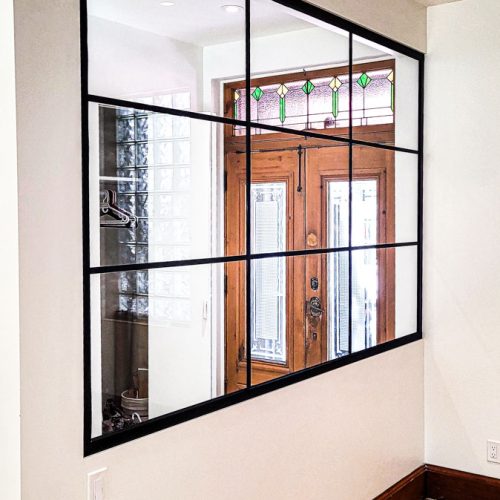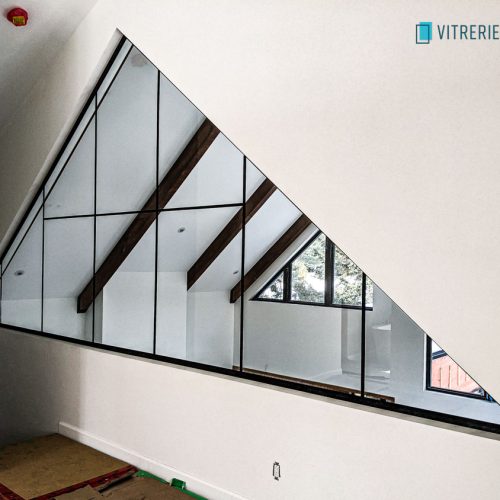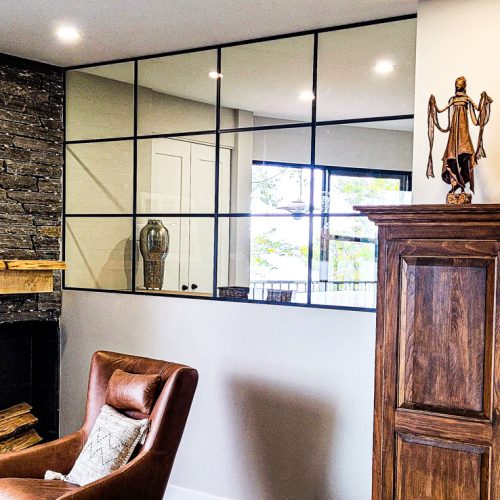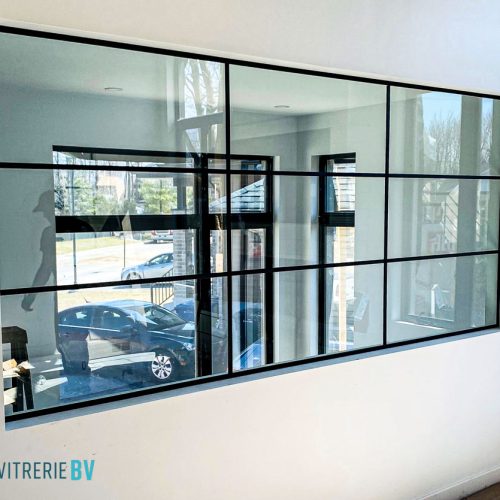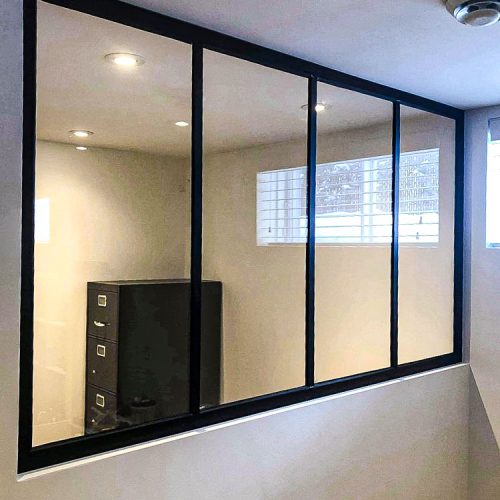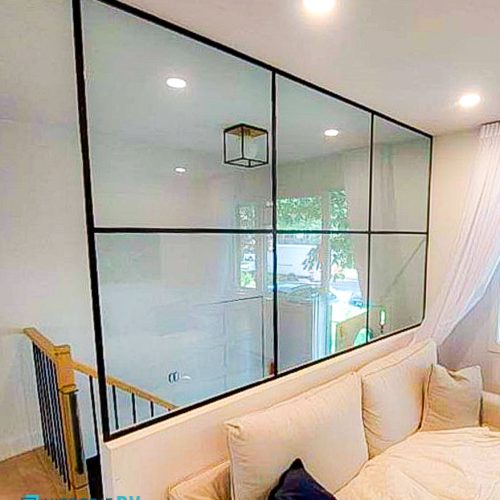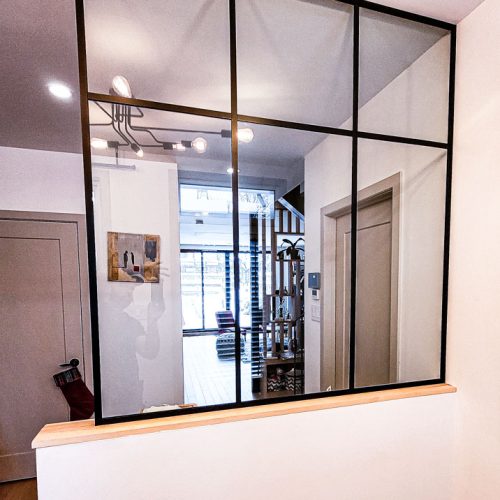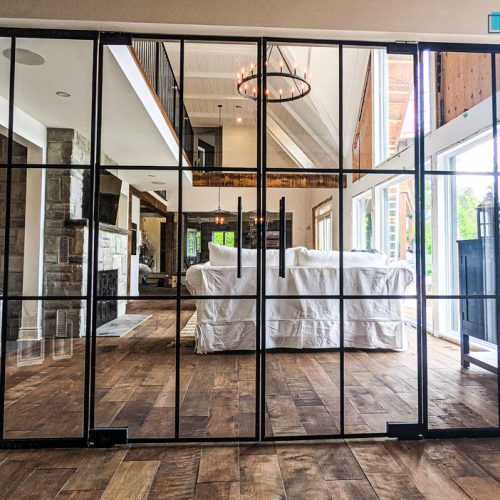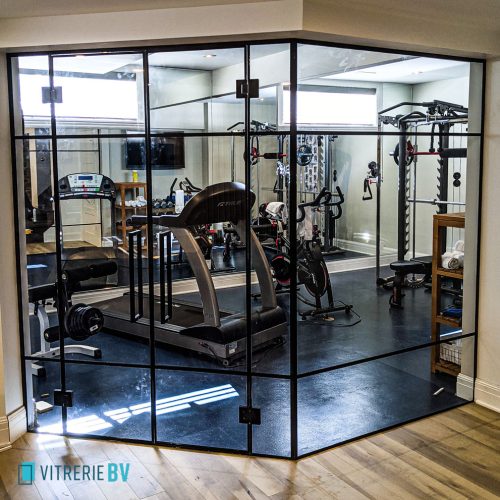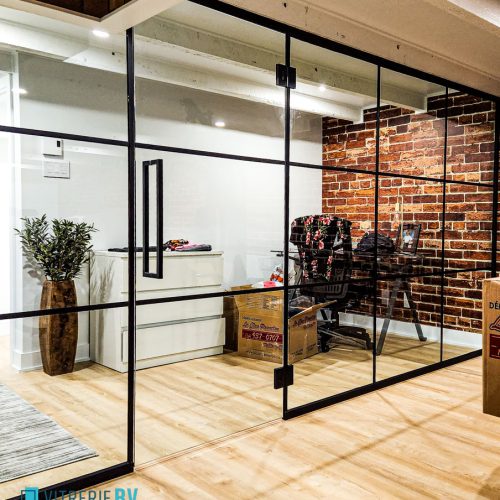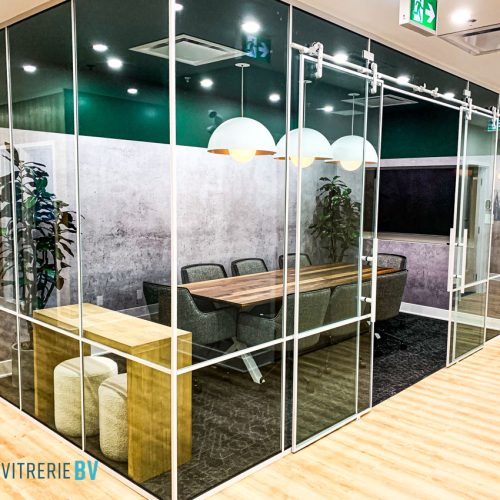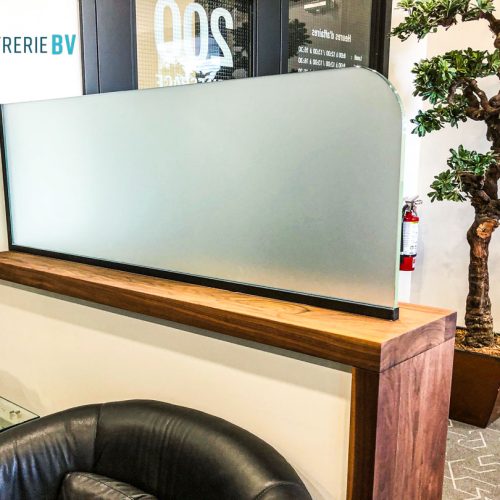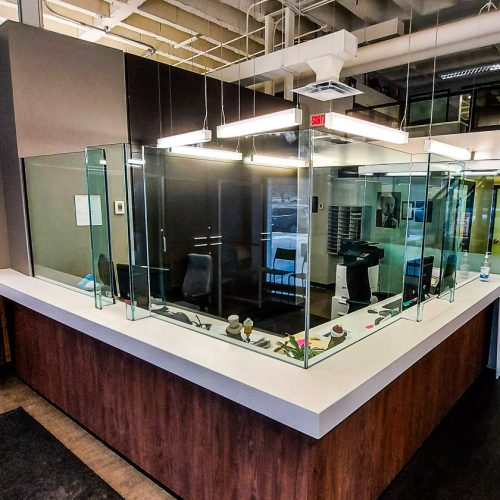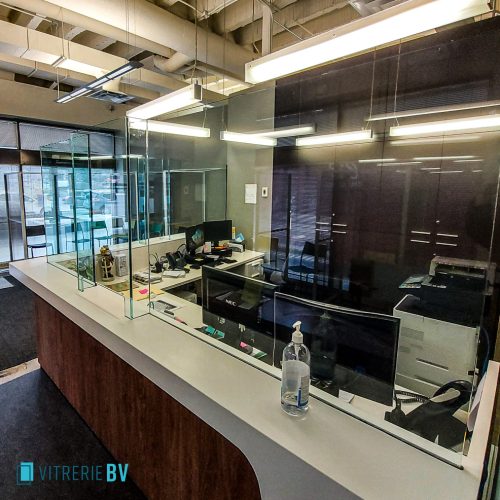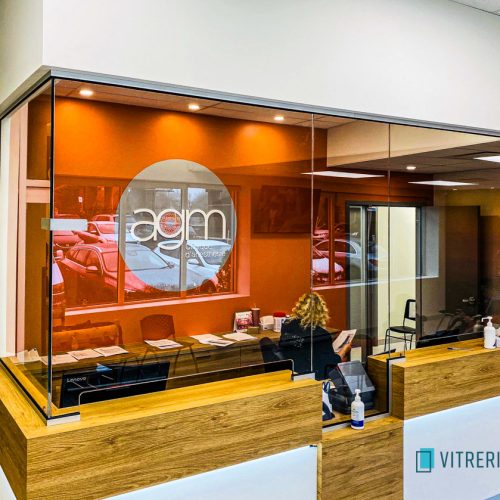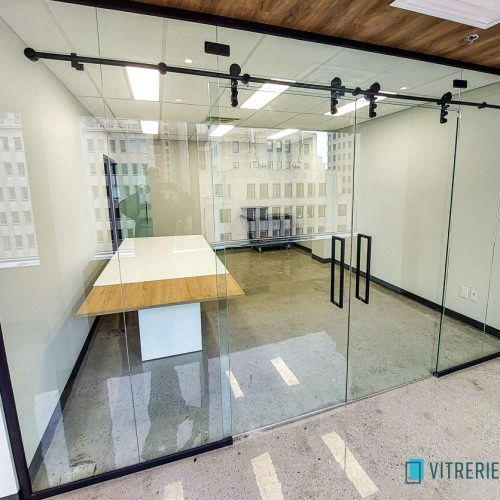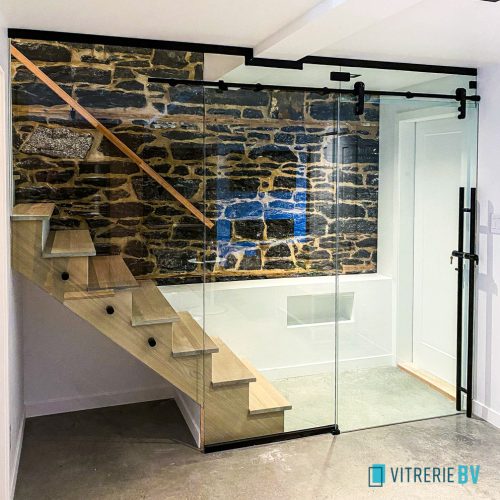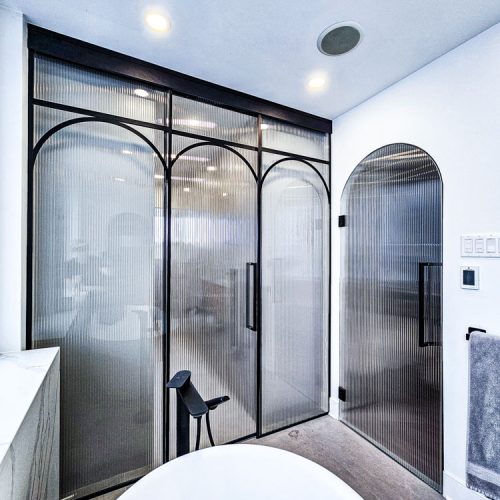Glass Partition Walls have always been a distinctive design element. Between 2019 and 2021, while living with COVID, many spaces were transformed thanks to plexiglass partitions designed to meet health standards. From then to now, reality has evolved, but the need to separate two spaces has remained a trend, now with greater sophistication thanks to custom glass partitions. In this article, we explore this growing trend for both residential and commercial needs.
We’ll start with a simple definition of an interior glass partition wall and its benefits, then take a closer look at partition types, glass types and the hardware used. Finally, we’ll give you some installation advice and an idea of how much glass partitions cost.
Let’s go !
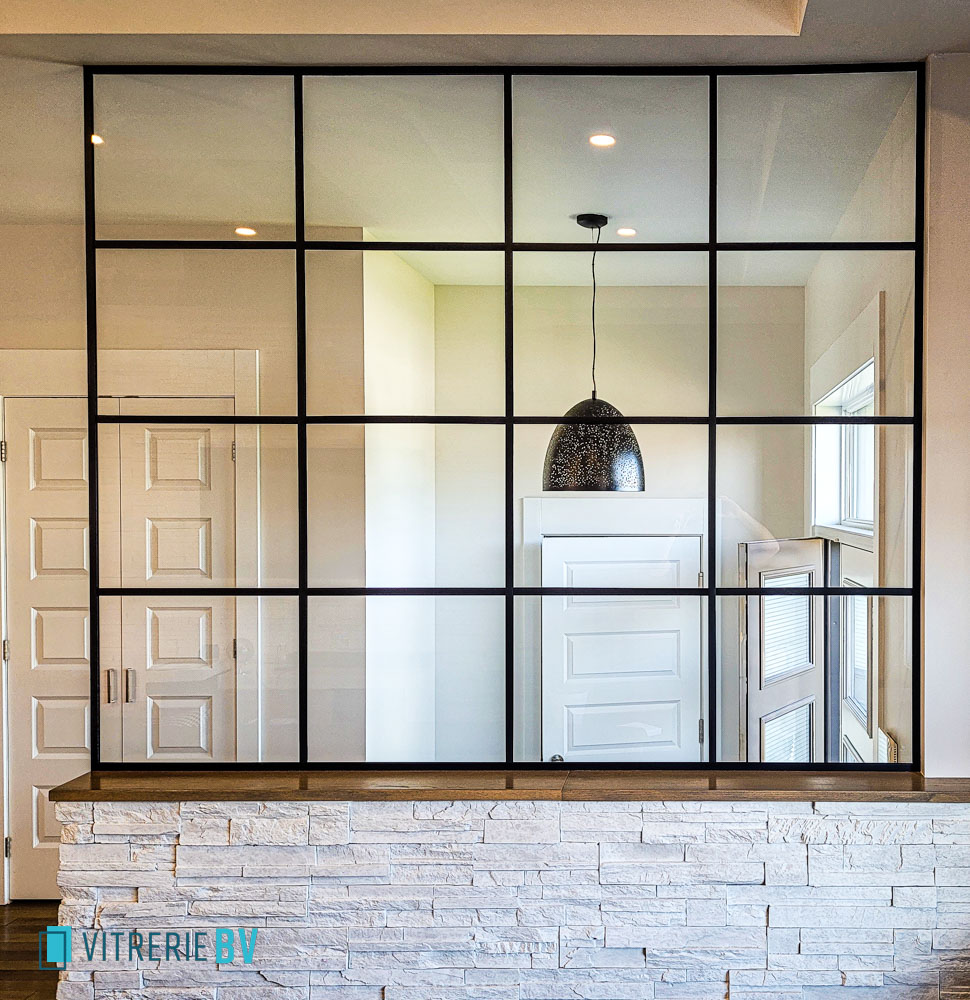
What Is the Advantage of a Glass Partition Wall?
Although there are many benefits to using a glass partition, our experts often hear the same feedback from customers. The three main advantages sought with this type of solution are:- Preserving light: The undeniable advantage of a glass partition is that it preserves and even enhances the brightness of a room, thanks to the illusion of transparency it creates. This is impossible with a partition made of wood or other materials.
- Aesthetic separation: A second advantage is undoubtedly the elegant separation between two spaces. Glass partitions offer an aesthetic, refined and modern solution, whatever the style of the interior.
- Acoustic insulation: Finally, glass partitions offer improved acoustics between two spaces. Whether separating offices or dividing a living room from a TV room, glass provides significant acoustic support.
Types of Glass Partitions Walls: Residential and Commercial
In general, glass partitions are custom-made to suit your needs and type of installation, so there are no very specific industry terms. Sometimes we see that industrial or interior designers use the same jargon, but with a few differences. Based on Vitrerie BV’s experience, we have classified the types of glass partitions as follows:What Types of Doors Are Available for Glass Partitions?
We can’t get lost here: there are either sliding systems, flush-mounted systems or non-recessed systems. To better understand the difference between the 3 types of doors, here are 3 photos. Because a picture is worth a thousand words.
Of course, the choice of the door depends on your needs and desired style.
Partition enthusiasts are spoiled for choice! This type of glass project offers many options: clear, ultra-clear glass, satin, ultra-satin, Flutex, Rain, and thicknesses ranging from 10 mm to 19 mm. There’s something for everyone!
To help you better understand the types of glass available, we’ve created a chart that compares the different options. In the image below, the glass types for glazed partitions are highlighted in yellow.
What Hardware Should I Buy for an Interior Glass Partition Wall?
This is where the possibilities become endless. It may sound simple, but the choice can quickly become complex due to the wide range of options available. This is also where prices can vary considerably: the colour, the type of hardware, the lock, the trim, and so much more! It all depends on your budget and your desired design.
Hinges and locks, finishing mouldings, handles. Again, a picture is worth a thousand words:
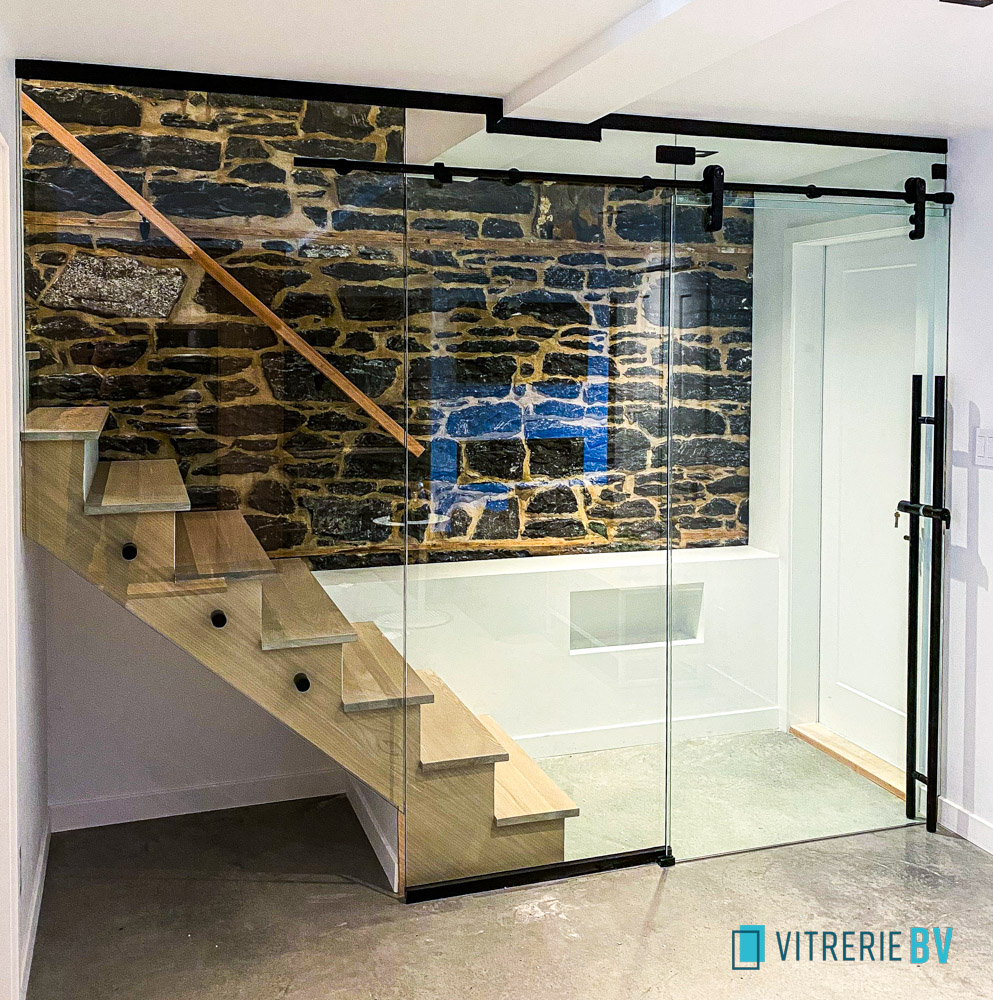
60" ladder handle with integrated lock (PV8-220S)
Standoffs 1 1/2" (SSASF112112B)
What Is the Main Challenge in Installing a Glass Partition?
The biggest challenge? Well, it’s often a question of location. Imagine: your condo is a penthouse on the 30th floor with a temperamental elevator, or worse, you live on the Plateau Mont-Royal in the middle of a construction zone where parking vignettes are rarer than summer snowstorms. Oh, and to top it all off, you have to carry a fragile glass partition up a spiral staircase. Easy, right?
Okay, these situations are a little exaggerated (just a little), but in these and similar situations, installation can become a real headache. Between the difficulty of access, the precautions required to transport the glass panels, and the constraints of the environment, such as construction or height, you soon find yourself in a life-size game of Tetris. But with a little patience (and a lot of talent), nothing is impossible!
How to Price a Glass Partition?
As a standard practice, your professional glazier will quote you a price per square foot based on the type of project and the type of glass selected. Keep in mind that glass partitions are generally custom-made: price fluctuations and variations are mainly due to the choice of hardware, which can vary in cost depending on the materials, finishes and accessories chosen.
Another factor to take into account when assessing the price of a glass partition is the ITC index (Indice de Transmission des Côtes) OR the STC index (Sound Transmission Class), which can influence the quality and acoustic properties of the glass.
What Is the STC Index?
Joking aside, the STC Index (Sound Transmission Class) measures a partition’s sound tightness, i.e., its ability to prevent noise from travelling from one room to another. This index is essential to ensure good acoustic comfort whether in the office or at home.
Glass Partitions: Atmosphere With a Capital A
Much more than just physical separations, glass partitions are an investment in the success and well-being of your most valuable asset – your employees. Whether in the office or at home, glass partitions help to create an environment bathed in light, enhancing ambience and comfort. That’s why we make sure your glass partitions are custom-made and, most importantly, delivered quickly.
